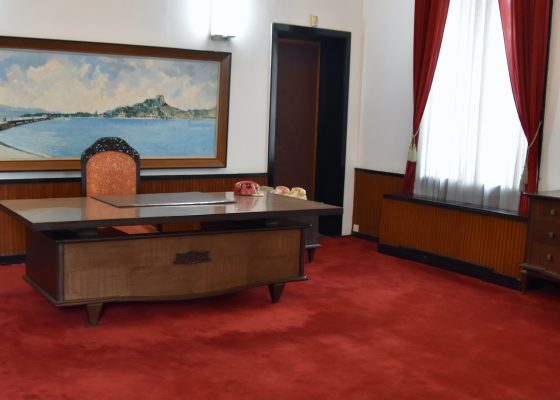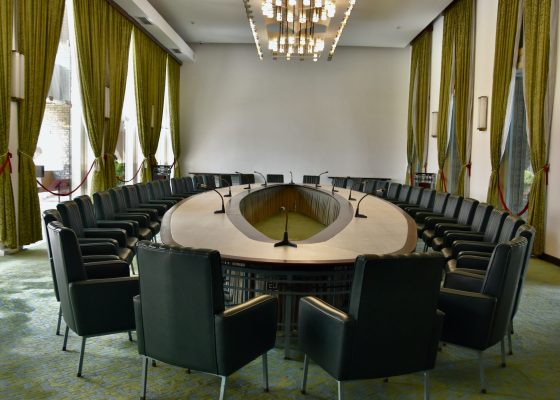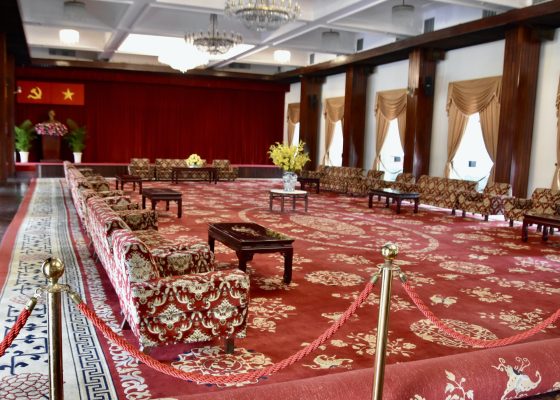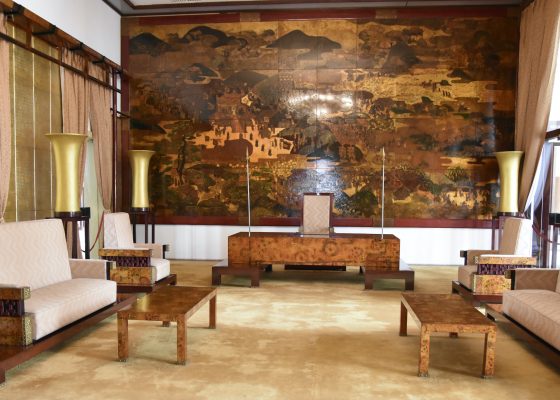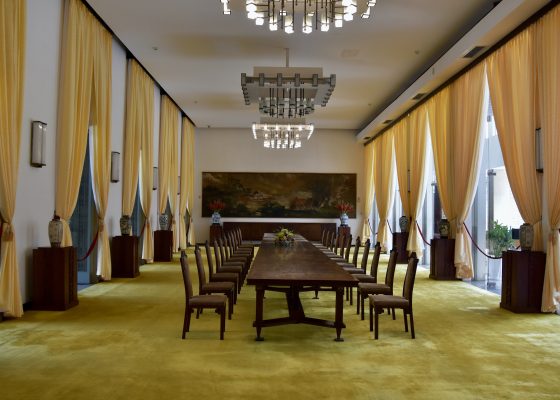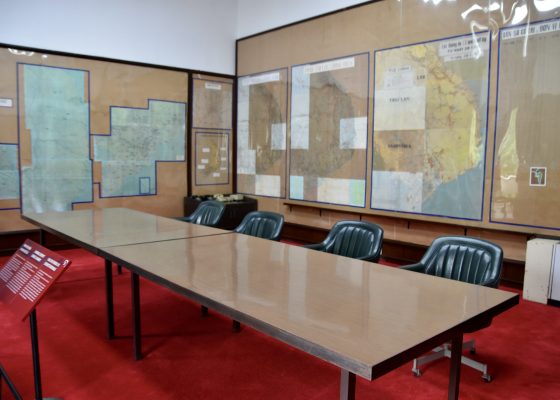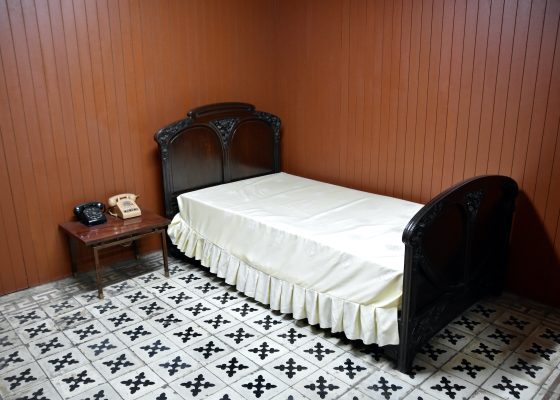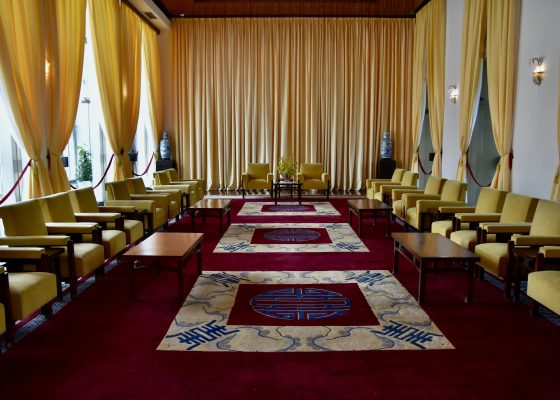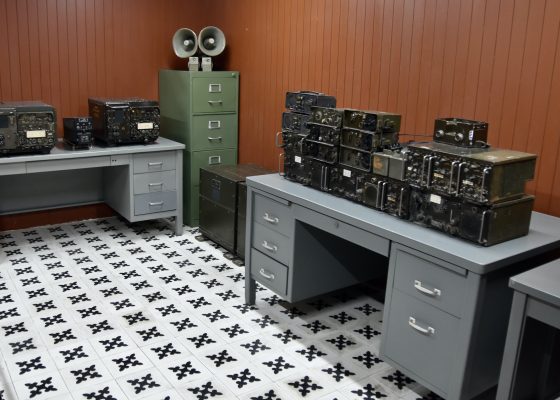Saigon – Definitely Not Ho Chi Minh City
In the last post we wrapped up our time in central Vietnam by visiting the fascinating city of Hue and now it’s time to head to the south of the country for our final few days of this wonderful Adventures Abroad tour. Accordingly we take the 90 minute flight from Hue to Ho Chi Minh City which I soon learn from our local guide is a name that no one who actually lives here uses. To the South Vietnamese it is and always will be Saigon and that’s how I’ll refer to it in this post. So please join me in exploring just a little of this greatest of all Vietnamese cities.
History of Saigon
As I learned almost from the moment of setting foot in Vietnam, the north and south of the country have had very different histories with the north heavily influenced by China and the south by traditions flowing out of India often via the influence of the Khmers. The area that now comprises Saigon was originally part of the Champa Empire until about 1145 when the Khmers took over. They held the area for another 500 years or so, but Saigon was nothing more than a fishing village then called Prey Nokor. It wasn’t until Vietnamese settlers started arriving in the early 15th century that anything resembling a city started to emerge and by 1700 the Vietnamese had wrested control of the area away from the declining Khmer Empire. It wasn’t until the late 18th century that the name Saigon even came into use. Thus by Old World standards Saigon is a relatively new city and there are no ancient monuments or temples to visit. What there is to see largely dates from the French colonial era which started with the Treaty of Saigon in 1862 which ceded the city to the French who began a massive construction campaign that earned the city the sobriquet “Pearl of the Orient”.
The French era lasted until 1955 when South Vietnam was recognized as an independent country with Saigon as the capital. While North Vietnam and Hanoi were being run along communist lines, the south was rampantly capitalist with Saigon leading the way. With the fall of the city to the North Vietnamese in 1975 attempts to curb its capitalist ways completely failed and eventually the Communist regime decided to let Saigon be Saigon, albeit not by name. Today it is a vibrant city of almost 10 million that is the economic engine of the country. Driving into the city from the airport and seeing the ultra modern buildings, the dozens of high end western based stores offering the likes of Gucci, Rolex and Mercedes Benz, one might be excused for thinking that maybe the Americans didn’t lose this war after all. If ideology is anything to judge by, this city is anything but communist.
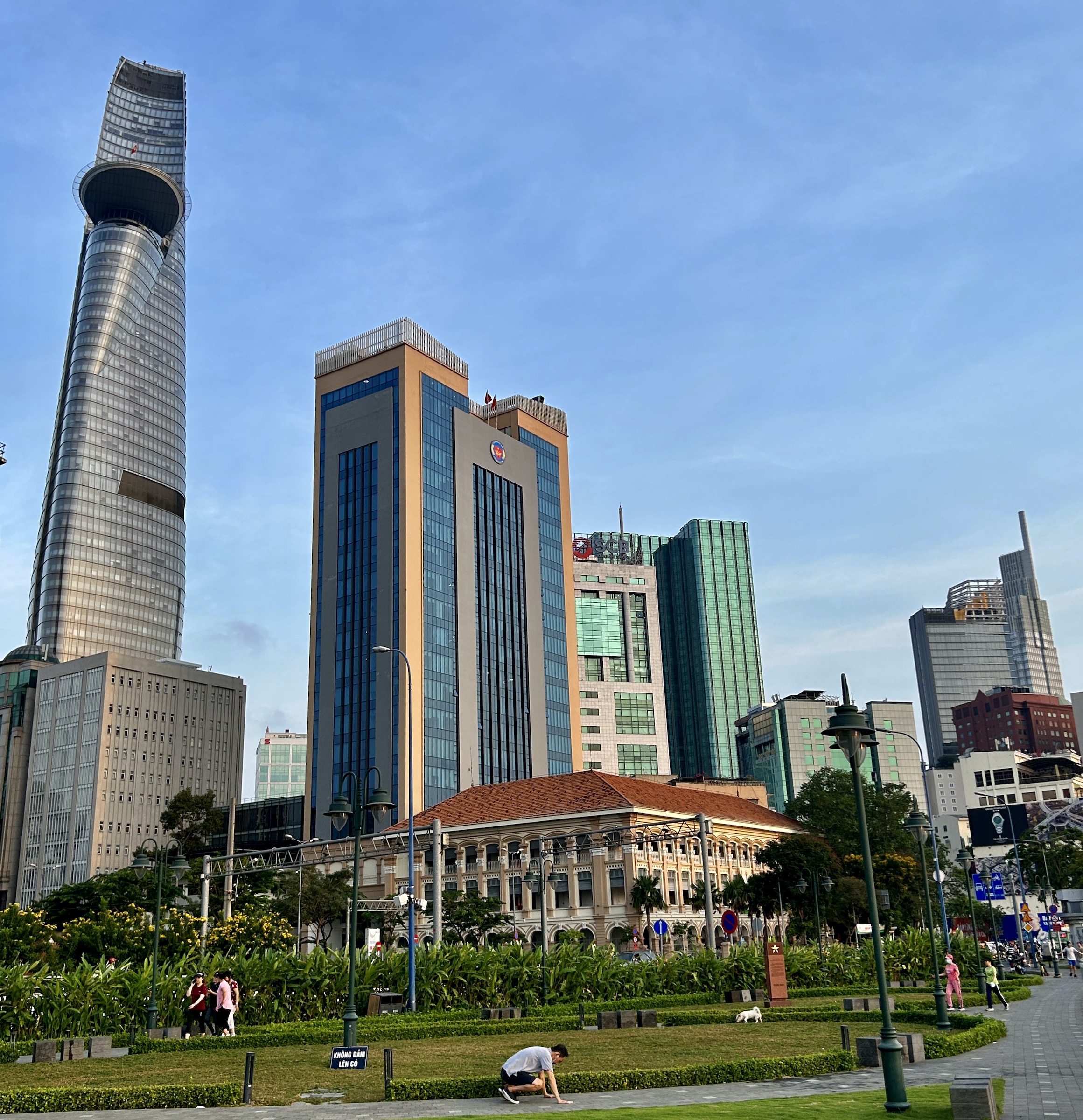
So without the usual historic attractions that have made Hanoi, Hoi An and Hue so interesting, what has Saigon got to offer? Here, in a somewhat scattershot pattern are just a few of the things and places that made me fall in love with this city from the get go, starting with the Grand Hotel where we stayed in Saigon. This French colonial gem was opened in 1930 and sits within walking distance of many of the city’s attractions.
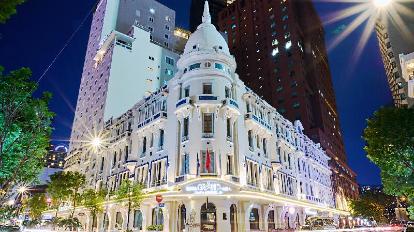
I really appreciated getting up early and walking along the nearby riverfront watching the locals practice tai chi, yoga and other eastern methods of attaining inner tranquility while seemingly millions of motorbikes flew by only metres away.
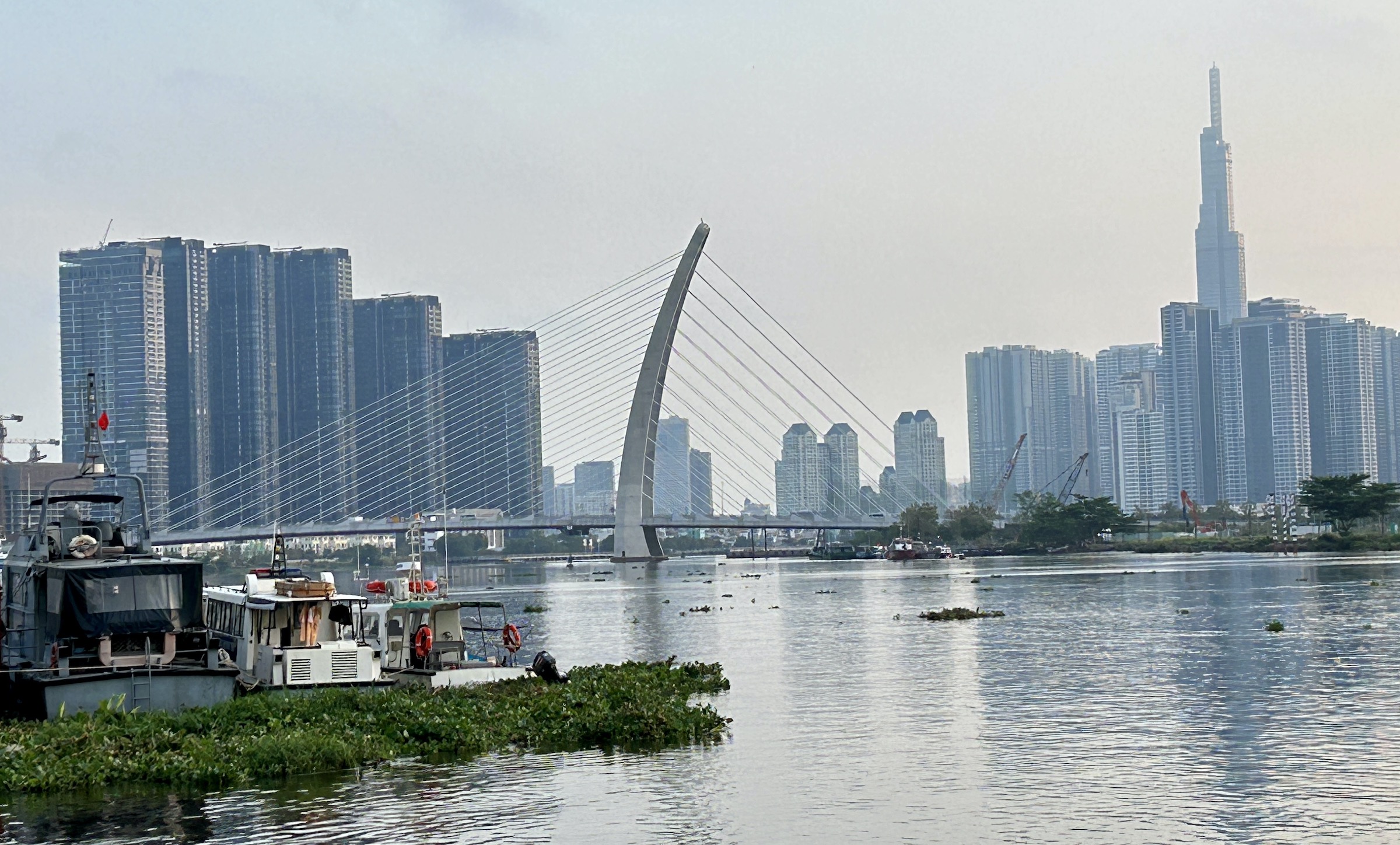
Several of the city’s most notable French colonial buildings are also close by including the Central Post Office which has a lovely facade.
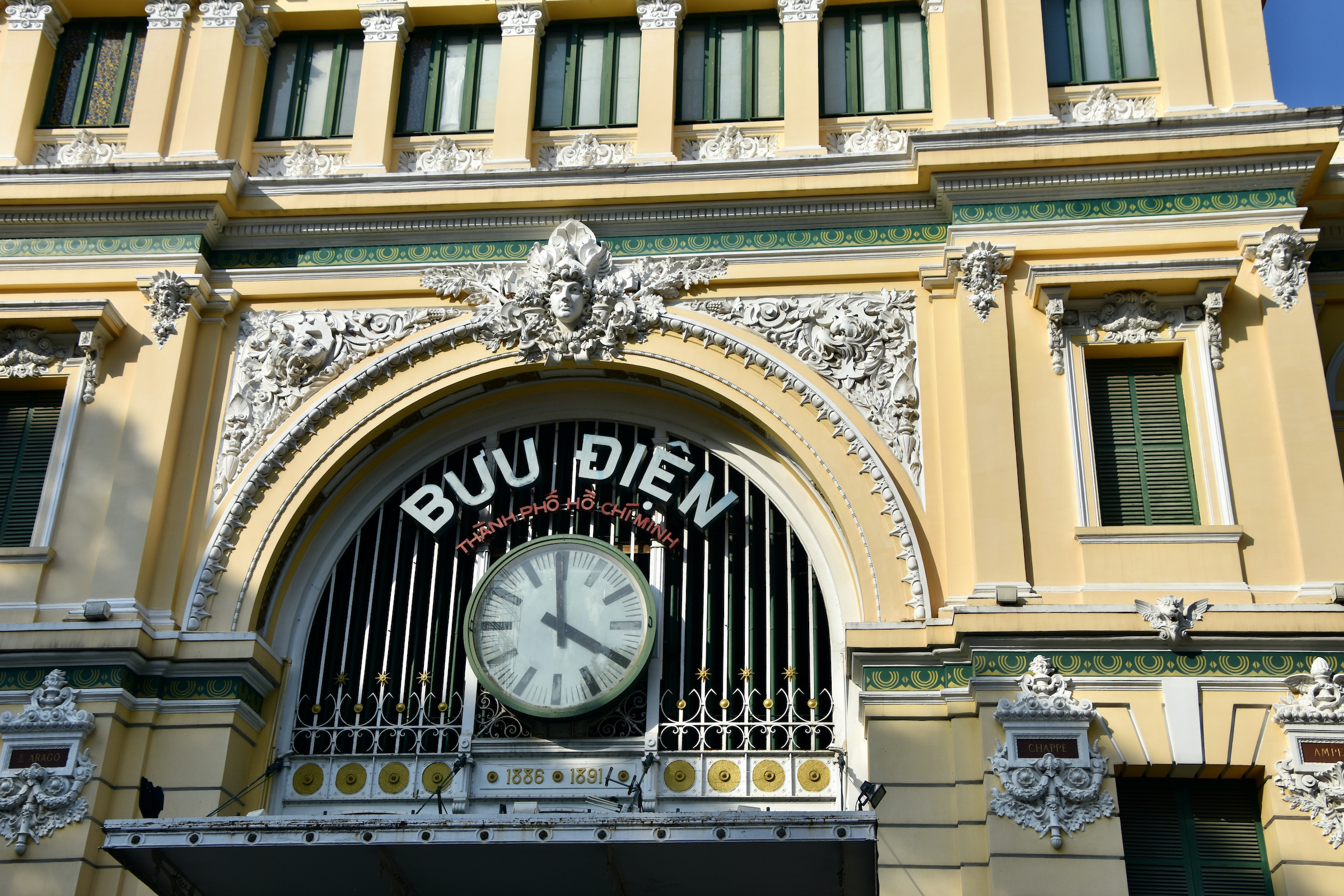
And an even more impressive interior.
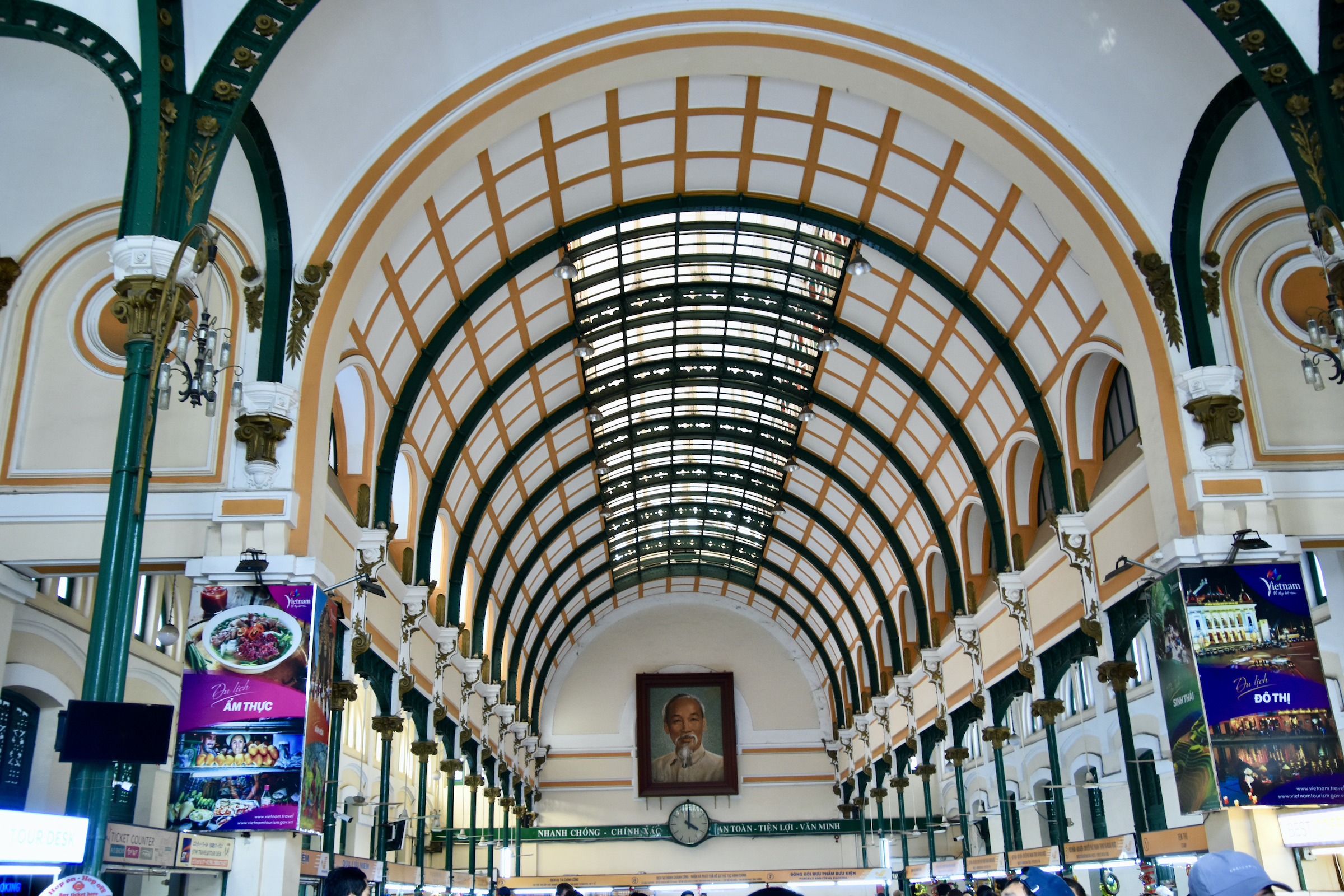
As a cartography nut, I was particularly taken with these two inlaid maps found inside.
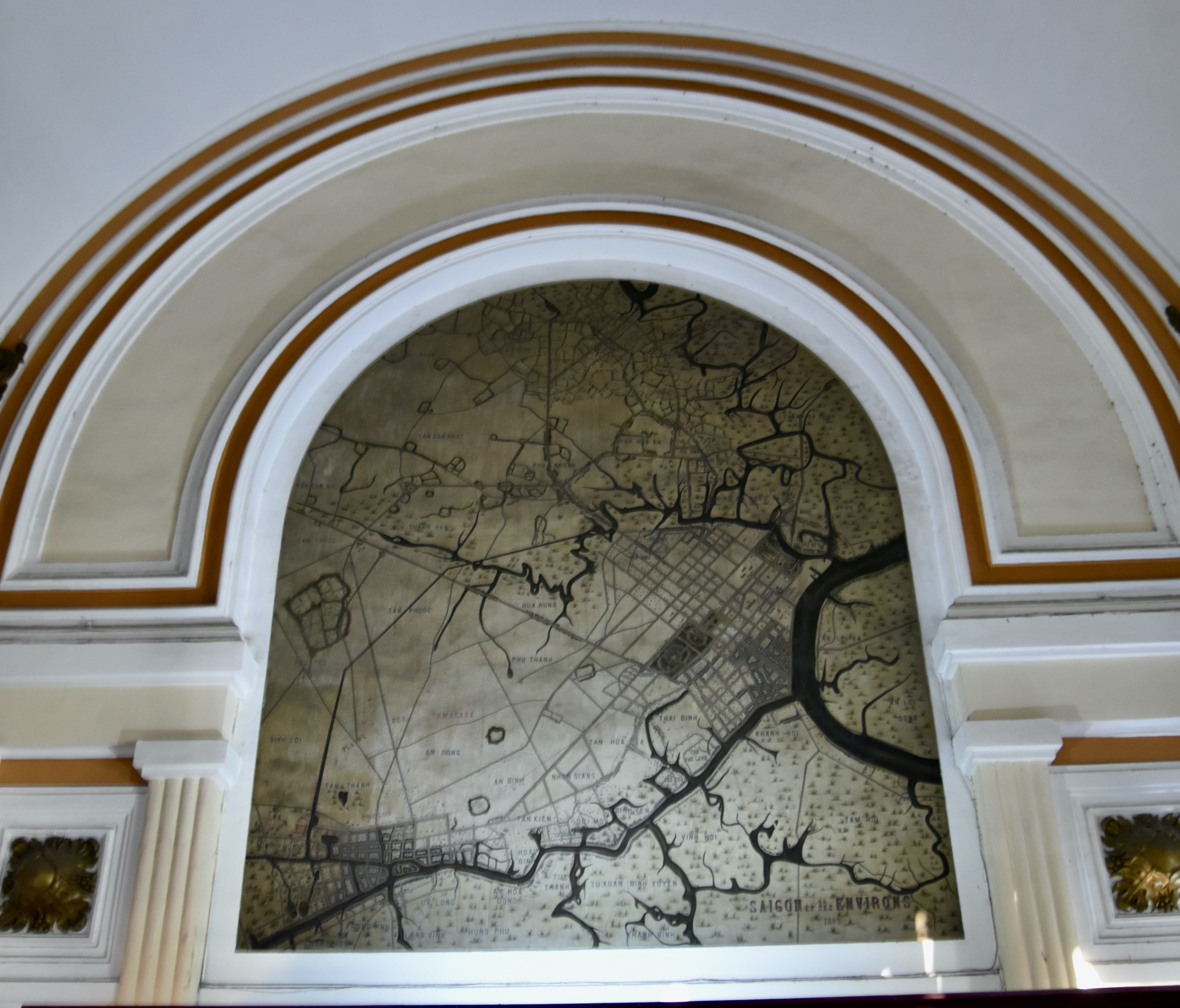
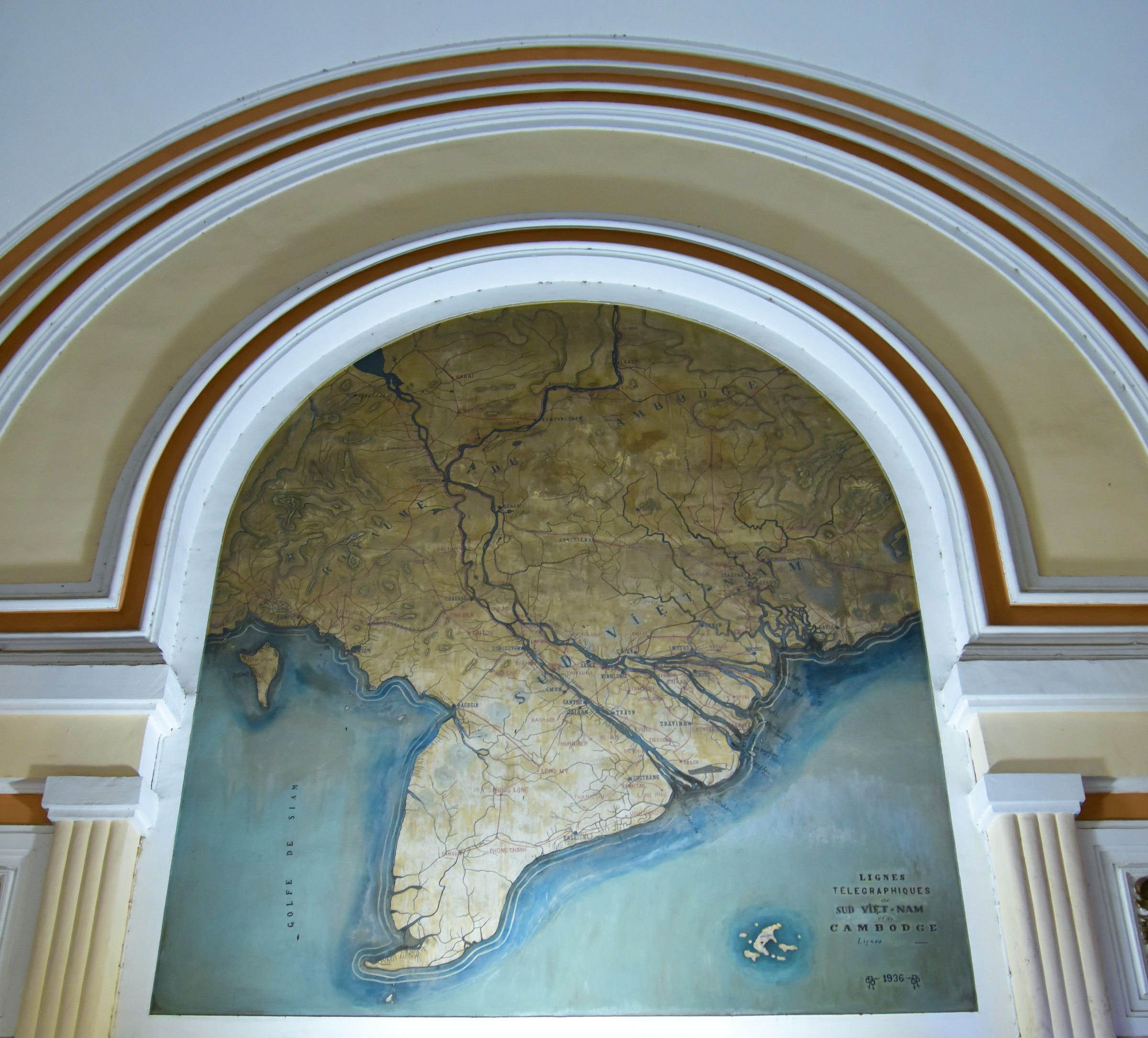
The most popular meeting spot in Saigon seemed to be on the steps in front of the Opera House which could easily be mistaken for one of the many Third French Republic buildings found in Paris. It is interesting that these French designed and built structures are now Vietnamese national treasures, despite the fact that the French were reviled at the time they were built. I’m sure there’s a lesson there somewhere, but I’ll be damned if I can figure out what it is.
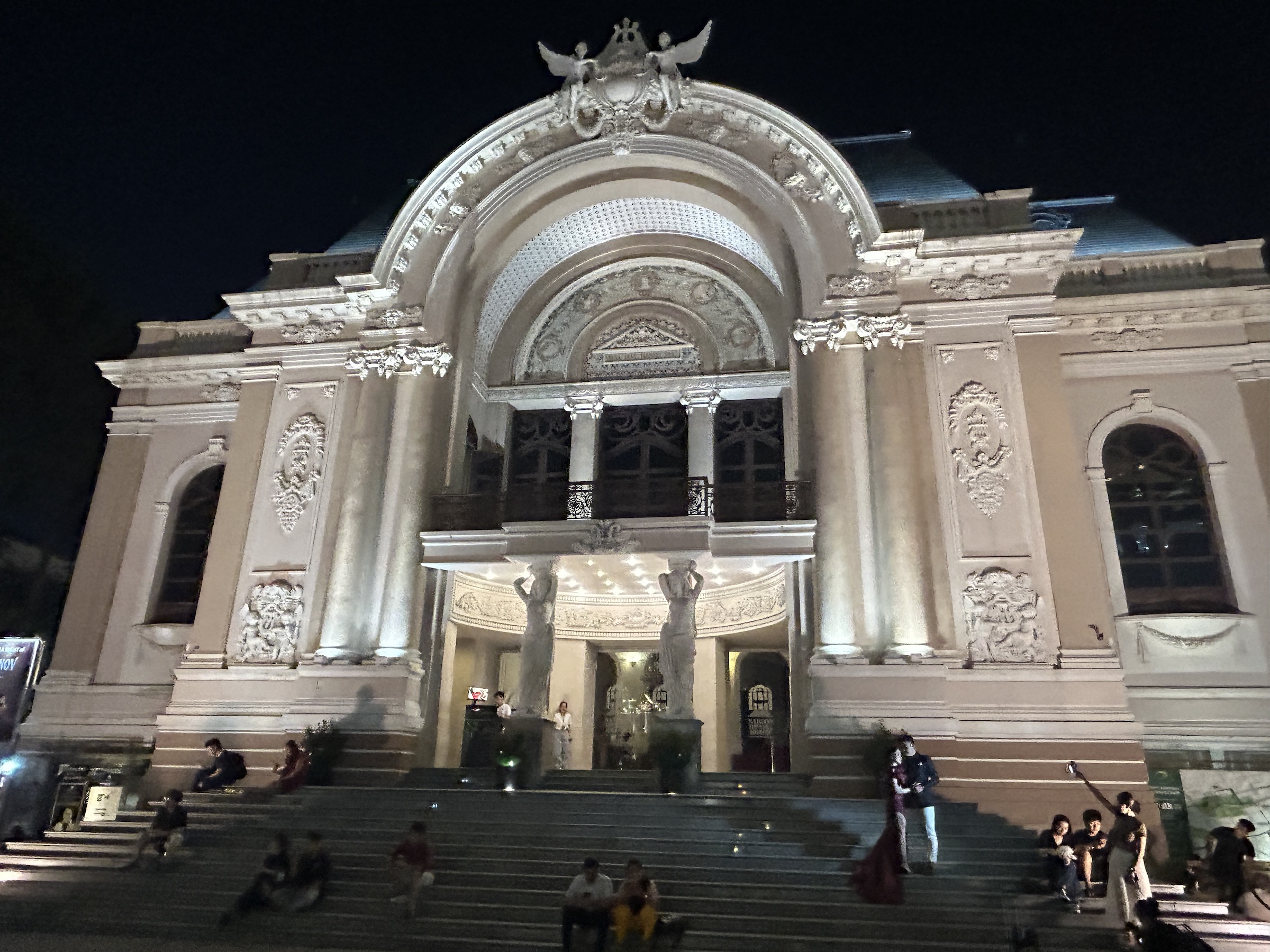
Also within walking distance of the Grand Hotel is another building with a much more dubious distinction. Anyone my age remembers this scene that took place on April 30, 1975. It marked the final nail in the coffin of American efforts to prop up the South Vietnamese government and signalled the defeat of the one of the world’s two superpowers in arguably the greatest communist victory of the Cold War.
This rather ordinary looking building was the former CIA headquarters in Saigon. It was from here, not the US Embassy as many people mistakenly think, that the final helicopter left the city, leaving behind thousands of Vietnamese who had worked for the Americans, many of whom were later executed by the new regime.
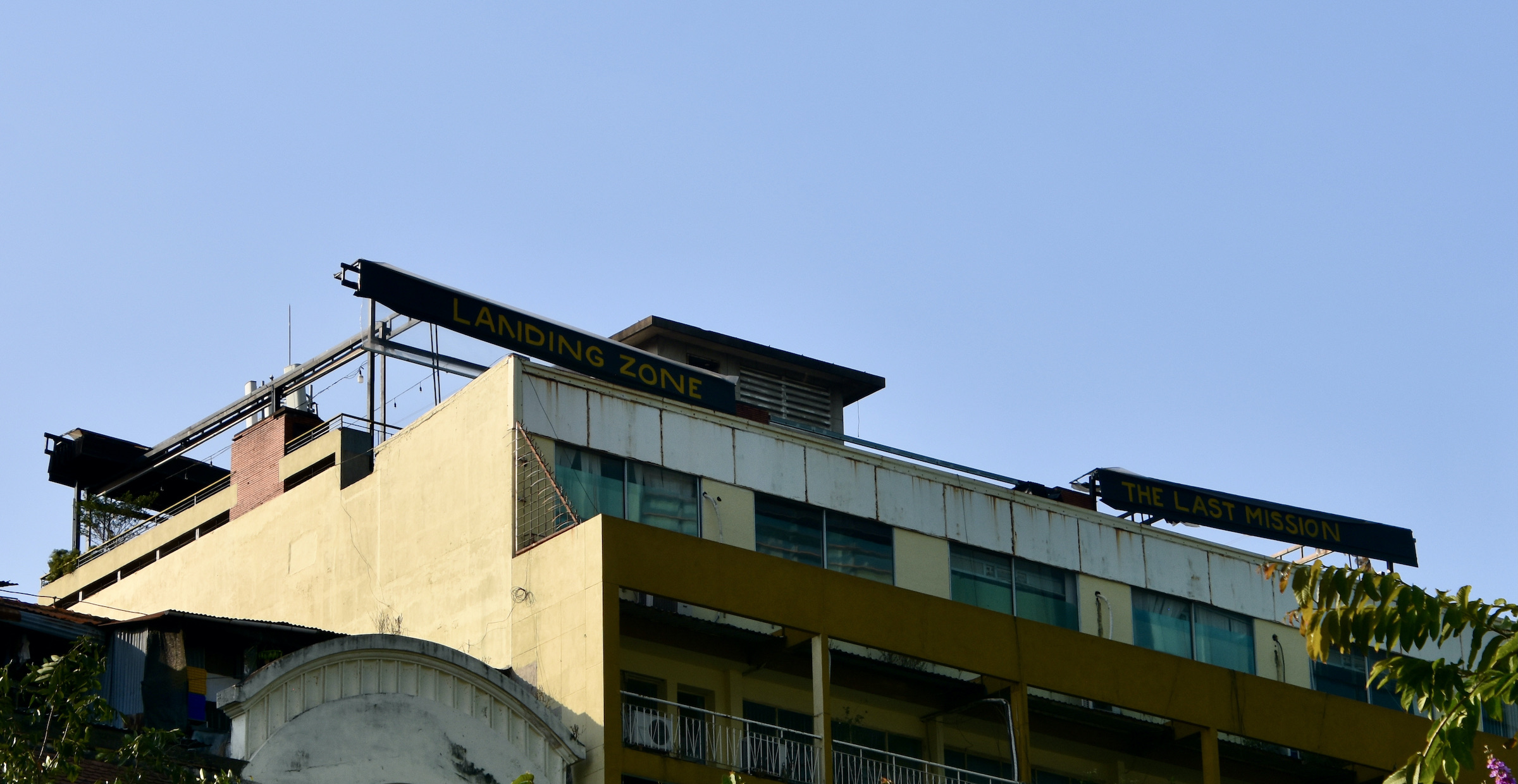
There are a lot of other reminders in Saigon of who won that war and we’ll visit a few starting with the former Presidential Palace, now known as Independence Palace. On the same day that the helicopters were evacuating people from the CIA building a North Vietnamese tank crashed through the gates from where General Nguyen Van Thieu, the South Vietnamese dictator had fled ten days earlier.
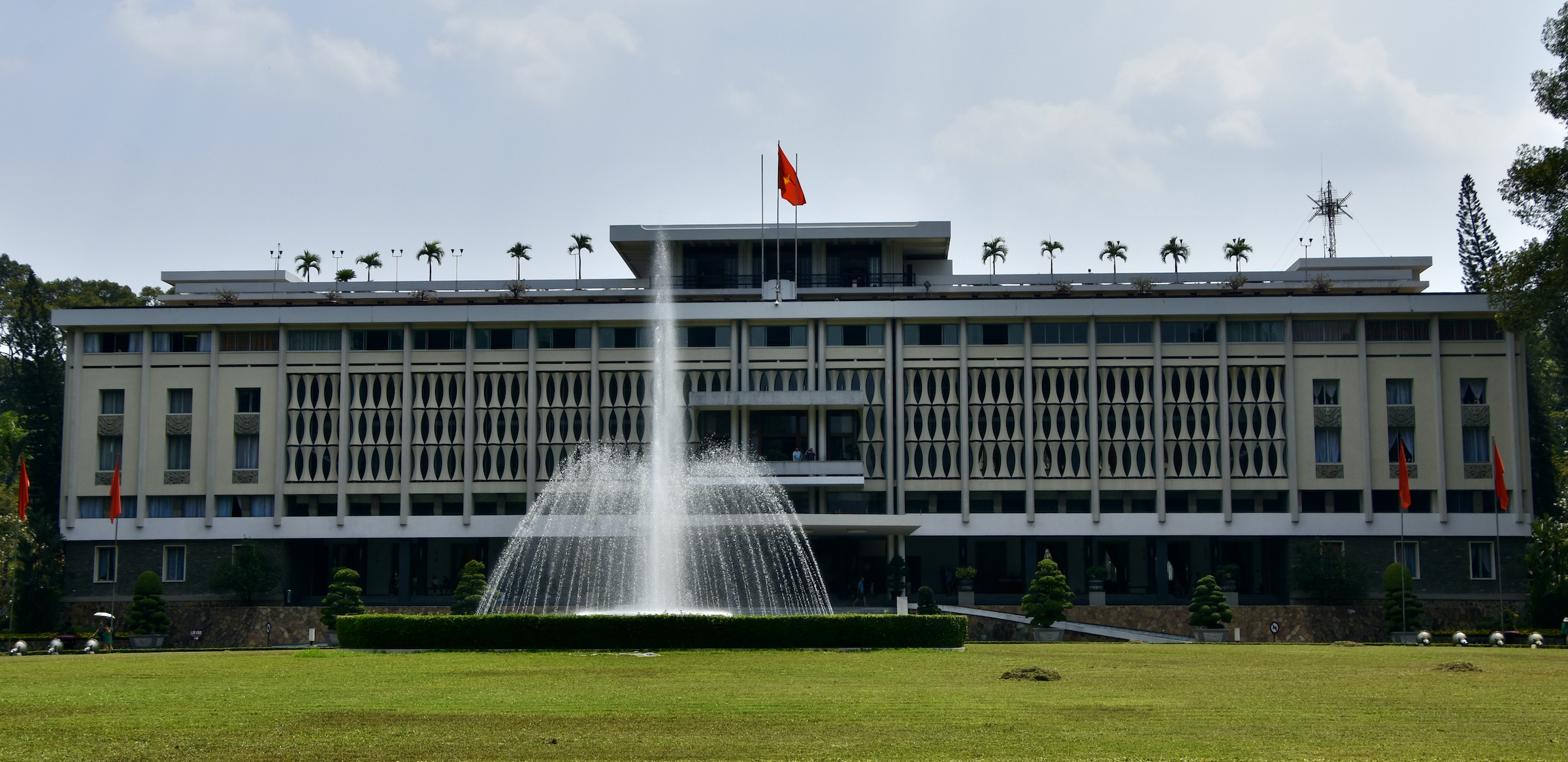
That tank now rests on the palace grounds, a reminder of those heady days to the North Vietnamese, but not so much I suspect for most Saigon residents.
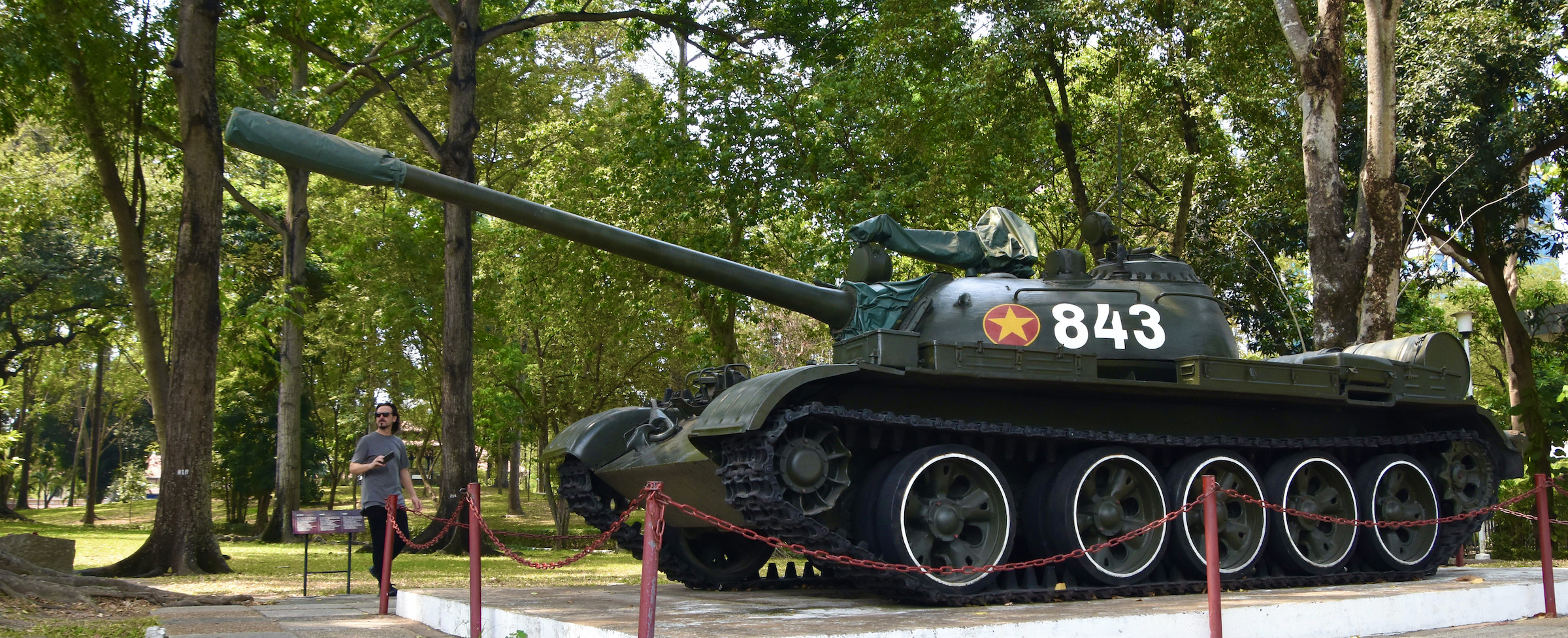
A tour of the Presidential Palace is included as part of the Saigon visit, but I wouldn’t call it a highlight. Here is a gallery of the various rooms you will see, including the President’s office, Cabinet Room and an underground bunker complex that is vaguely similar to the Churchill War Rooms in London. Double click to open a photo and double click again to enlarge.
- Presidential Office
- Cabinet Room
- Conference Hall
- Ambassador’s Chamber
- Meeting Room
- Security Council
- President’s Bunker Bed – Similar to Churchill’s
- VP’s Reception Room
- Communications Room
Slightly more interesting than the Presidential Palace is the War Remnant’s Museum, which as the itinerary noted, is primarily a propaganda outlet for showcasing captured American materiel like this Chinook helicopter.
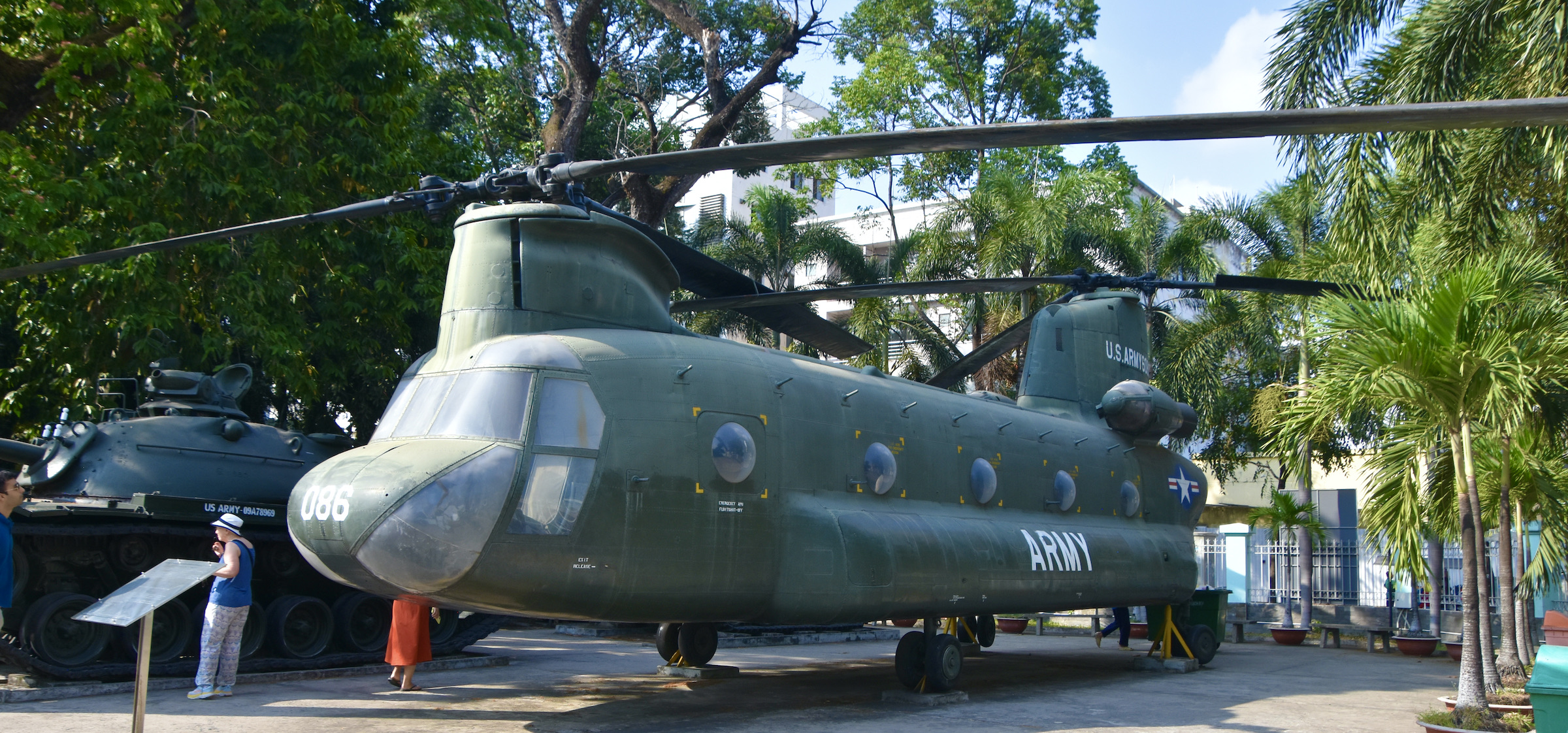
This is a BLU-82 Seismic bomb, aka a Daisy Cutter, a euphemism for what this thing actually did. It was dropped over an area of forest that was then literally flattened to the point of allowing one of those Chinooks to land and disgorge troops. These things were still being used as late at 2008 in places like Iraq and Afghanistan where instead of flattening forests, they were flattening people.
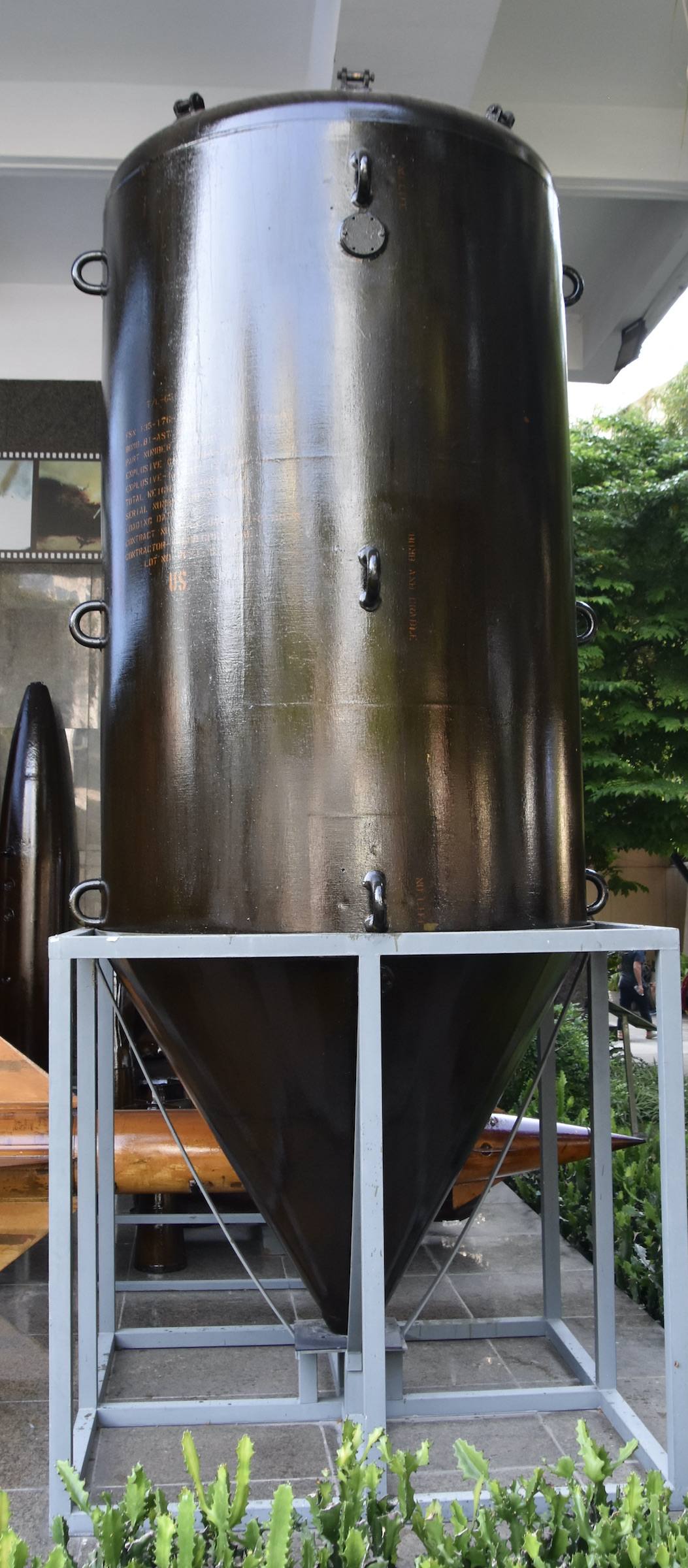
2023 seemed to be the year of the guillotine for me. I first saw one just a few days ago in Hanoi and now here’s another one in Saigon. Bizarrely I would see a third on the island of St. Pierre just off the coast of Newfoundland when I visited a couple of months after coming back from Vietnam.
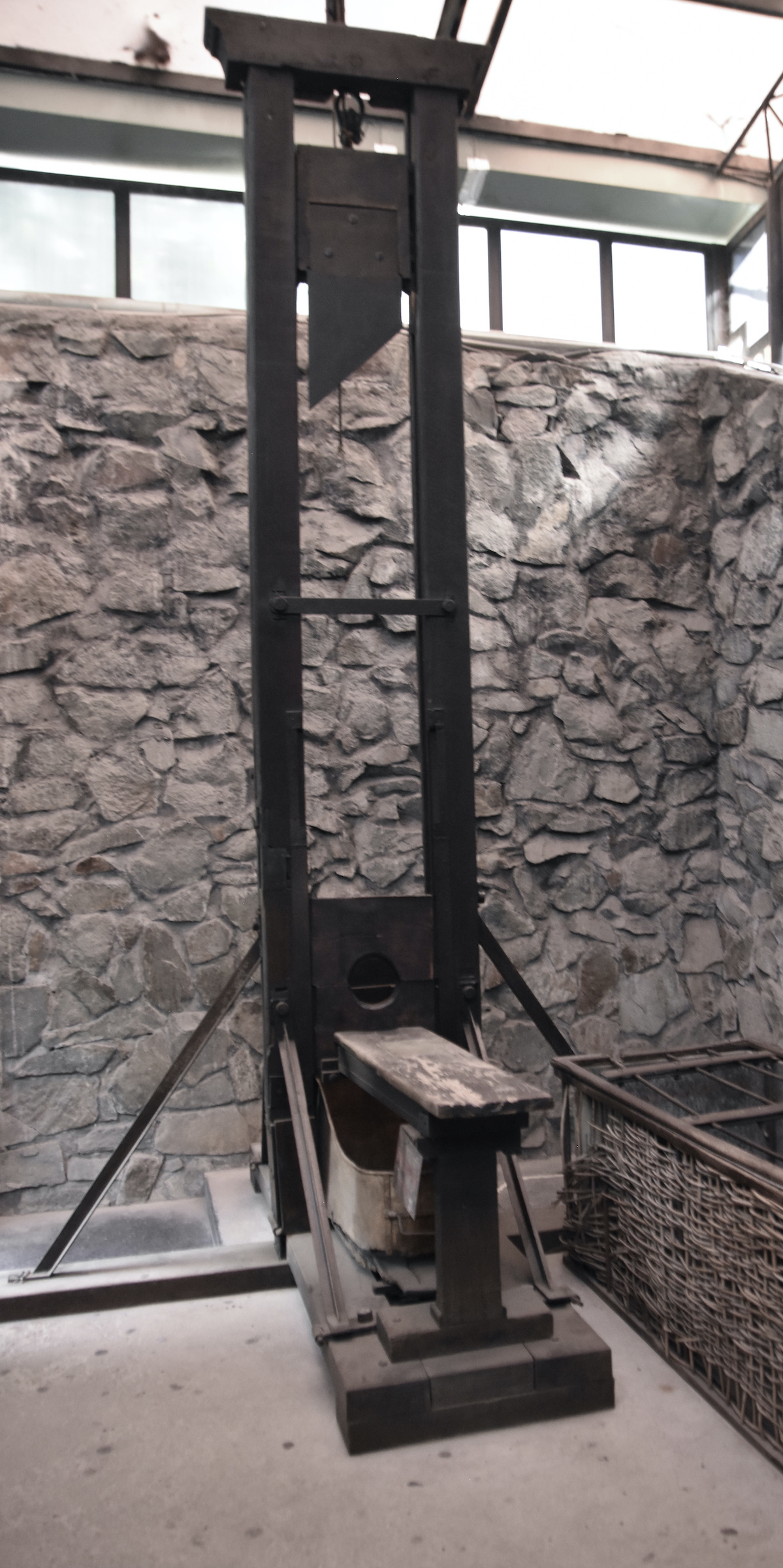
Speaking of bizarre, this newspaper headline on display grabbed my attention. I have no idea why it was in the museum, perhaps the curator was a Bear’s fan.
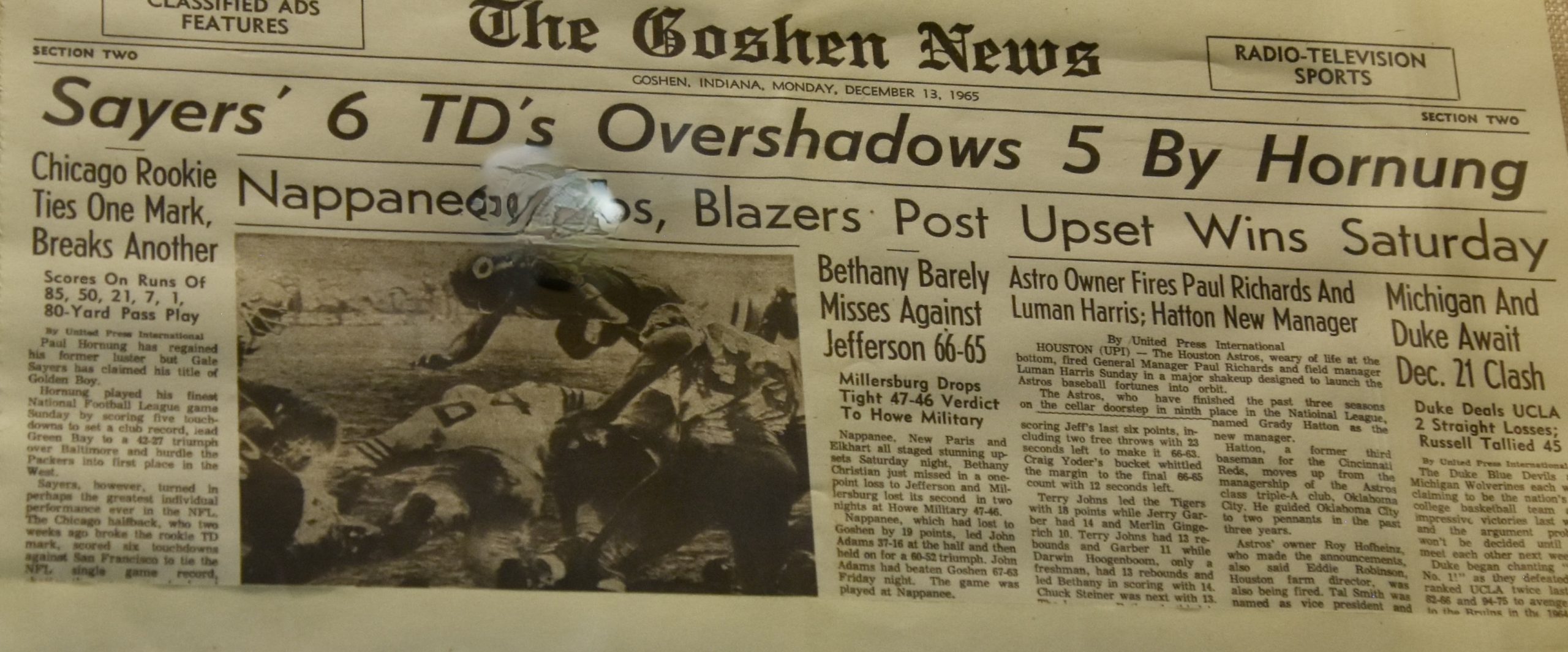
Time for a break from war before we head outside the city to view the Cu Chin tunnels. This is the Binh Tay market located in the middle of Saigon’s Chinatown district. It is aimed more at wholesalers than regular customers or tourists, but it’s still a very colourful place to just poke around.
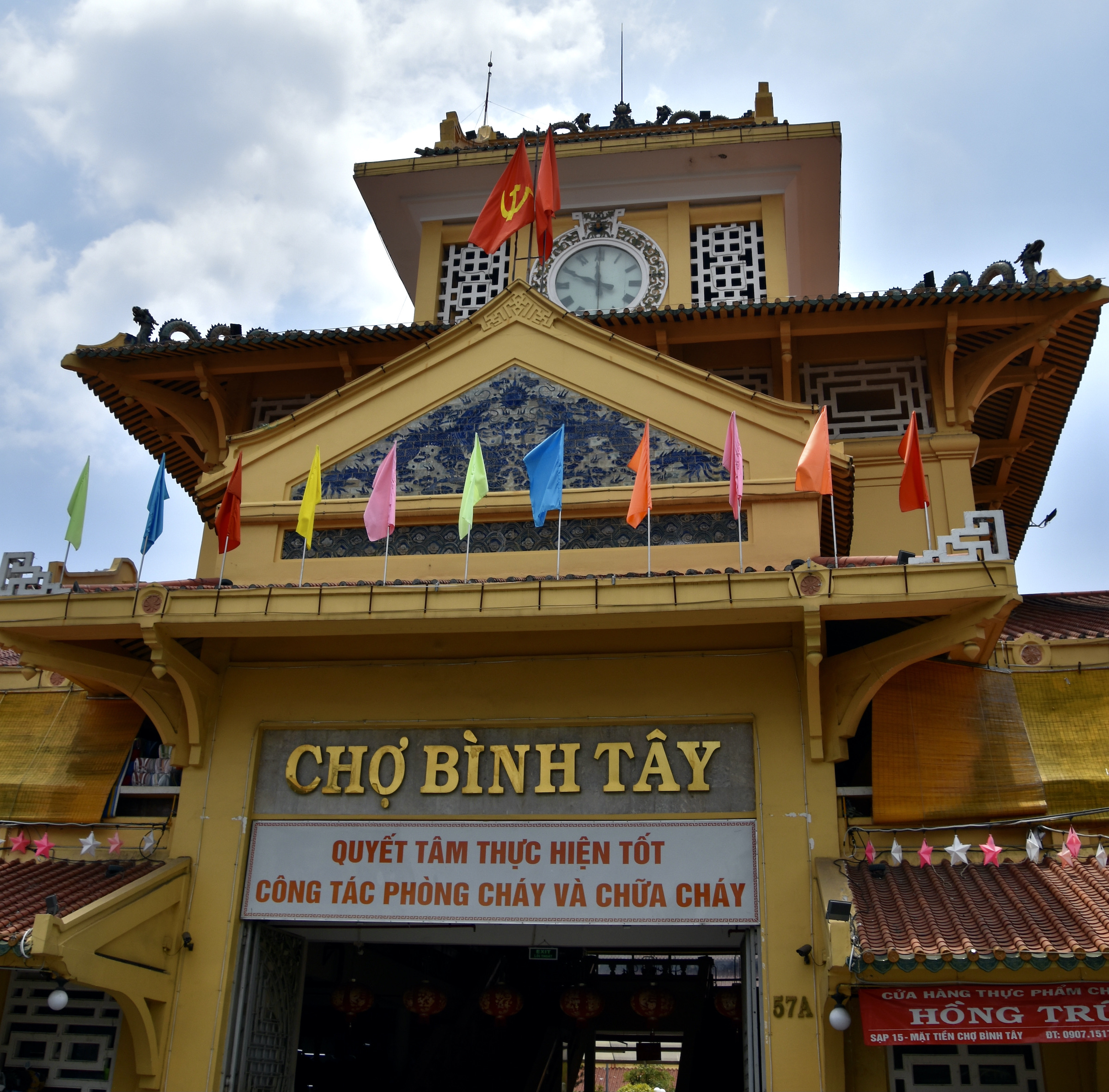
Here small vendors come to stock up on things like hats.
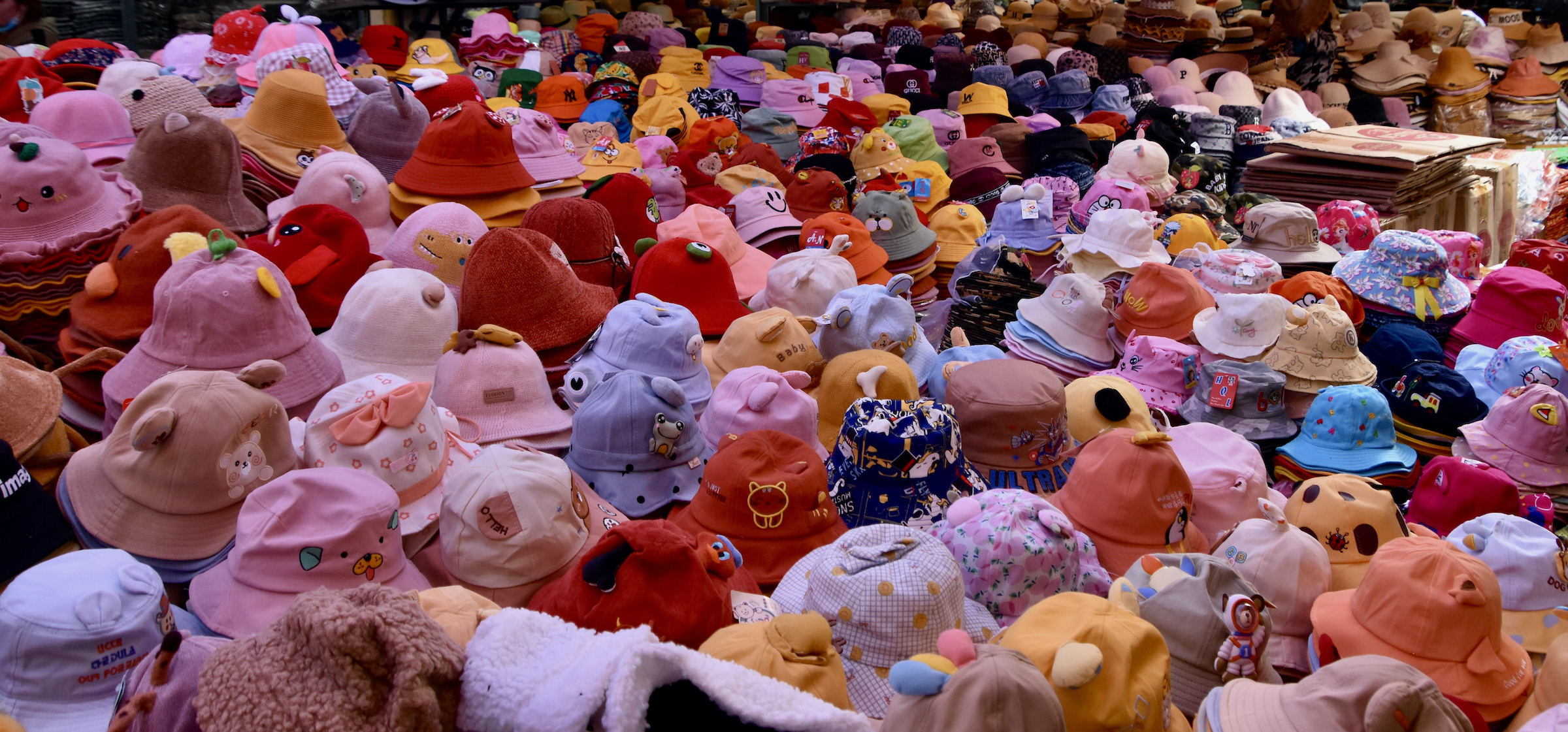
Or slip ons.
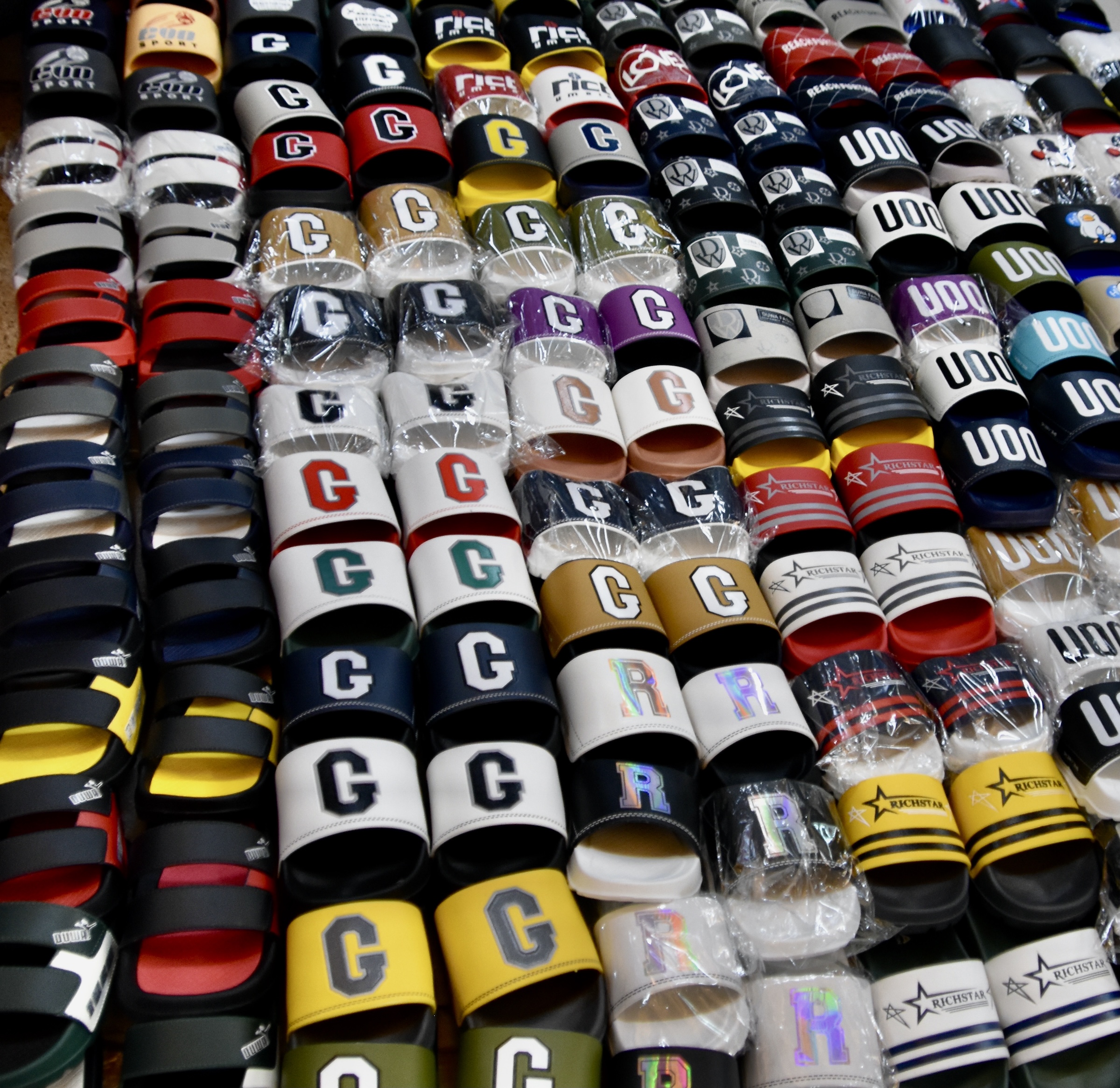
Or flip flops.

There’s also a large section selling bulk foods like these mushrooms.

Seeing the mushrooms made us hungry, so our next stop was at Pho 2000 where Bill Clinton and Chelsea dropped by in 2000. It was Clinton who normalized relations with Vietnam in 1995 and in 2000 the two countries signed a bilateral trade agreement that has benefitted both ever since.
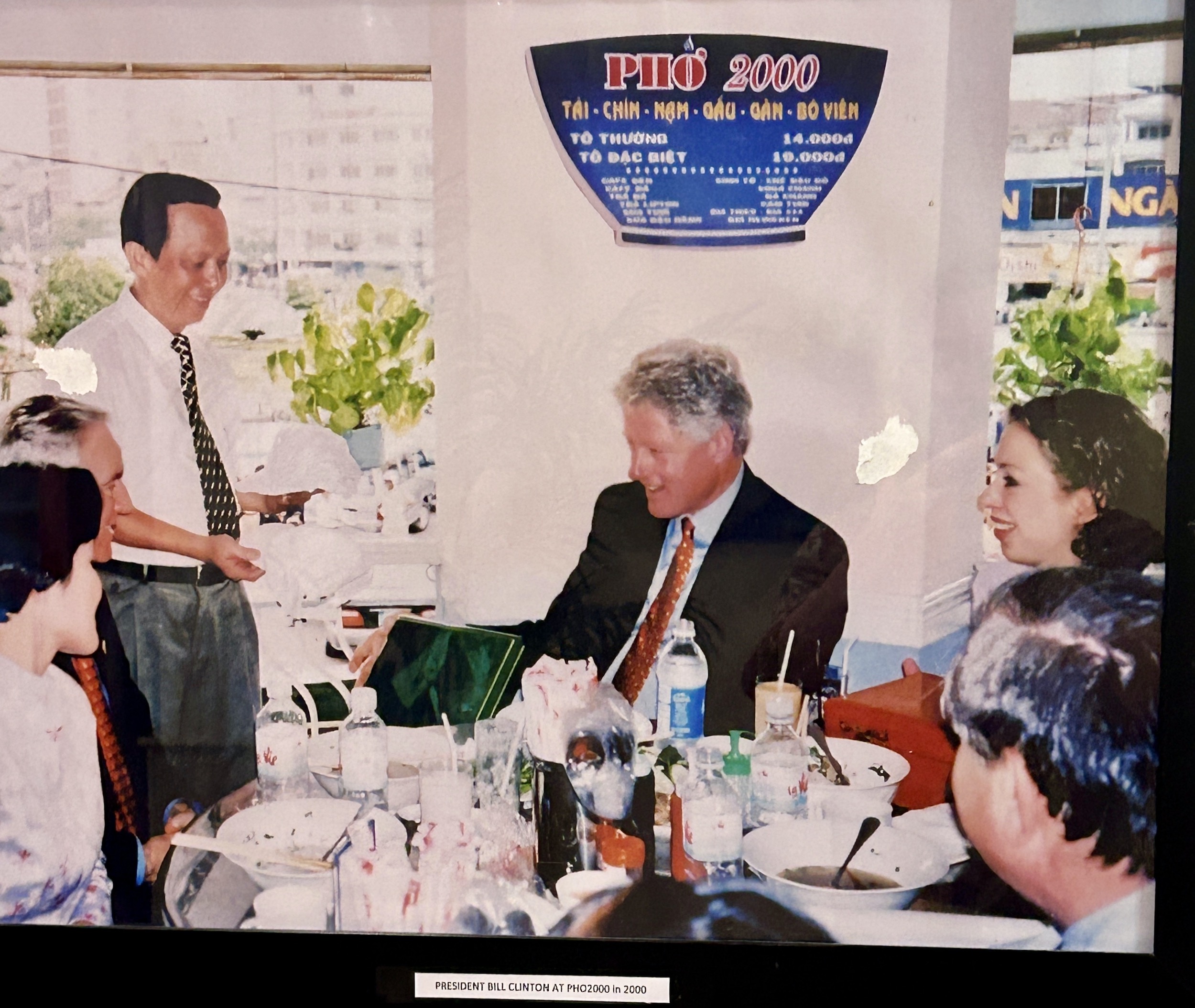
We had the same thing Bill did and if you want to have something that is traditionally Vietnamese then the pho here is a great place to try it.
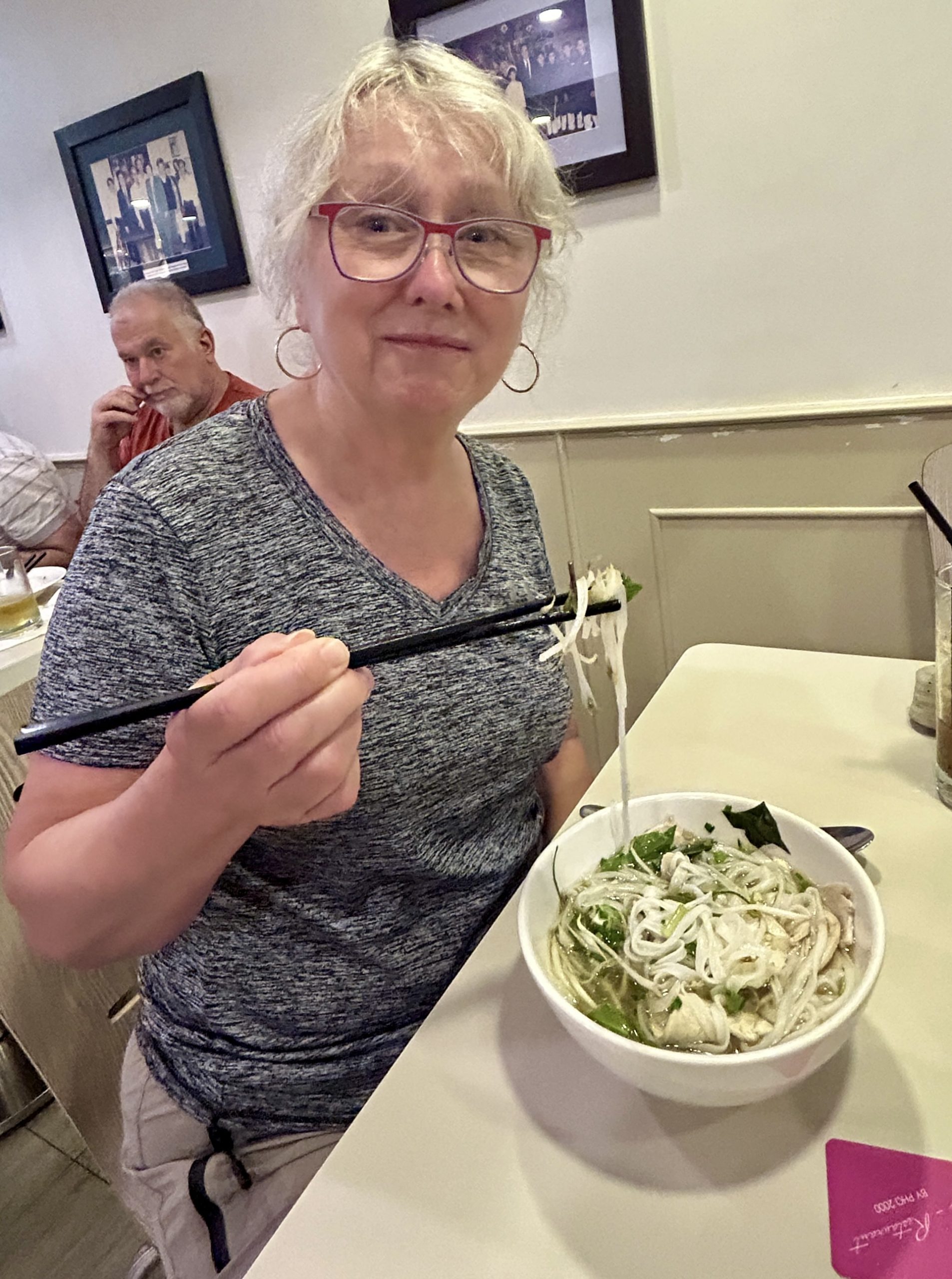
Cu Chin Tunnels
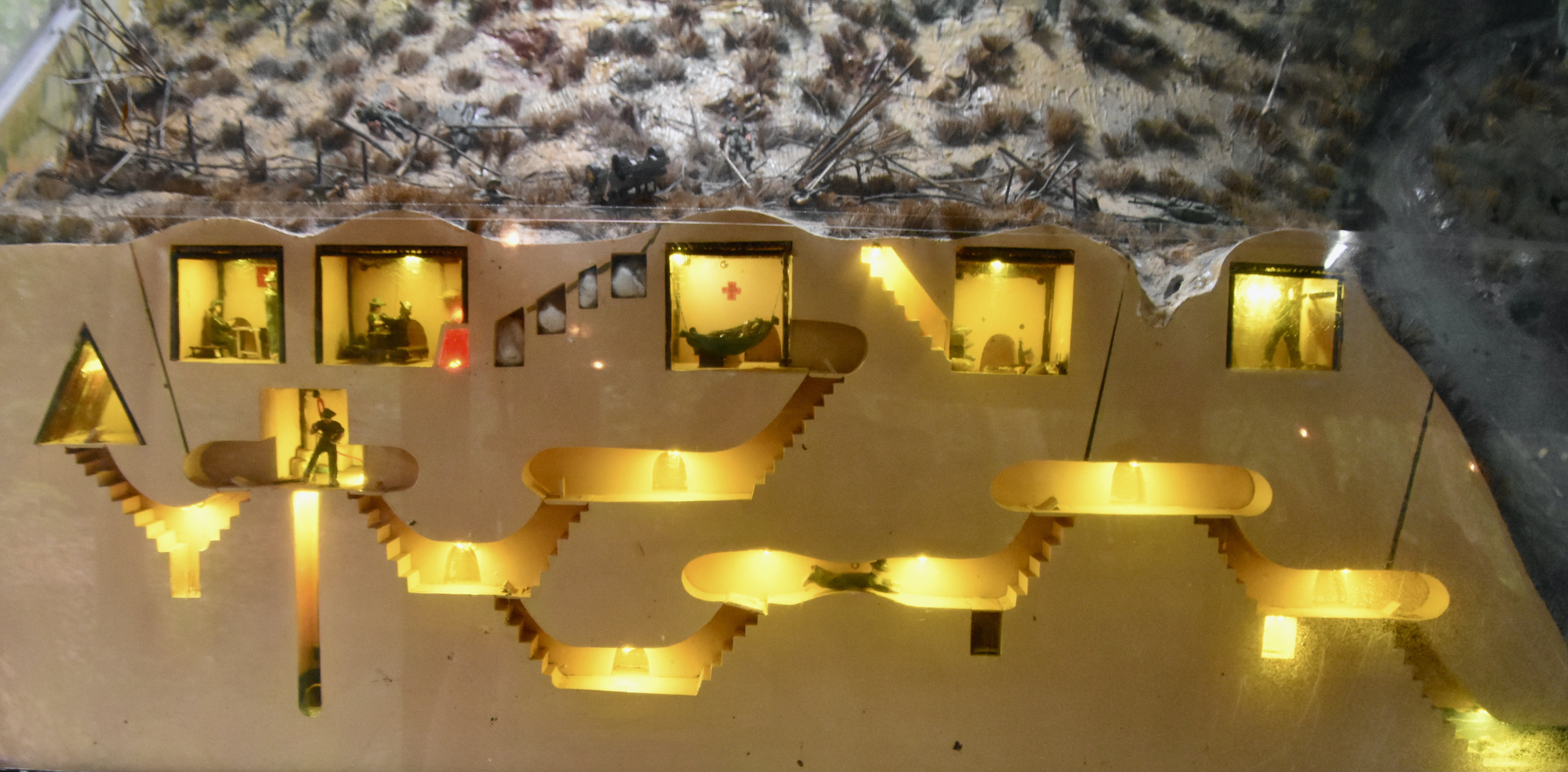
To be honest, I had never heard of the Cu Chin tunnels until I read Black Echo, the first book in the Harry Bosch detective series by Michael Connelly which in my opinion, is the best series still being written by a contemporary mystery writer. In that book we learn that as a teenager Harry was a ‘tunnel rat’ in Vietnam and that the ‘black echo’ is the feeling of absolute terror on going into one of these tunnels to hunt down suspected Viet Cong.
It turns out this fiction was based on fact. The Cu Chin tunnel system, just north of Saigon was built to hide and supply a large Viet Cong force that would emerge at night and attack South Vietnamese and American positions around Saigon. The model above is just a tiny portion of the entire system which reminded me very much of the underground cities of Cappadocia. For our final stop in the Saigon area we will visit these tunnels which is not for the squeamish or claustrophobic, although you wouldn’t suspect that from the enthusiastic welcome sign.
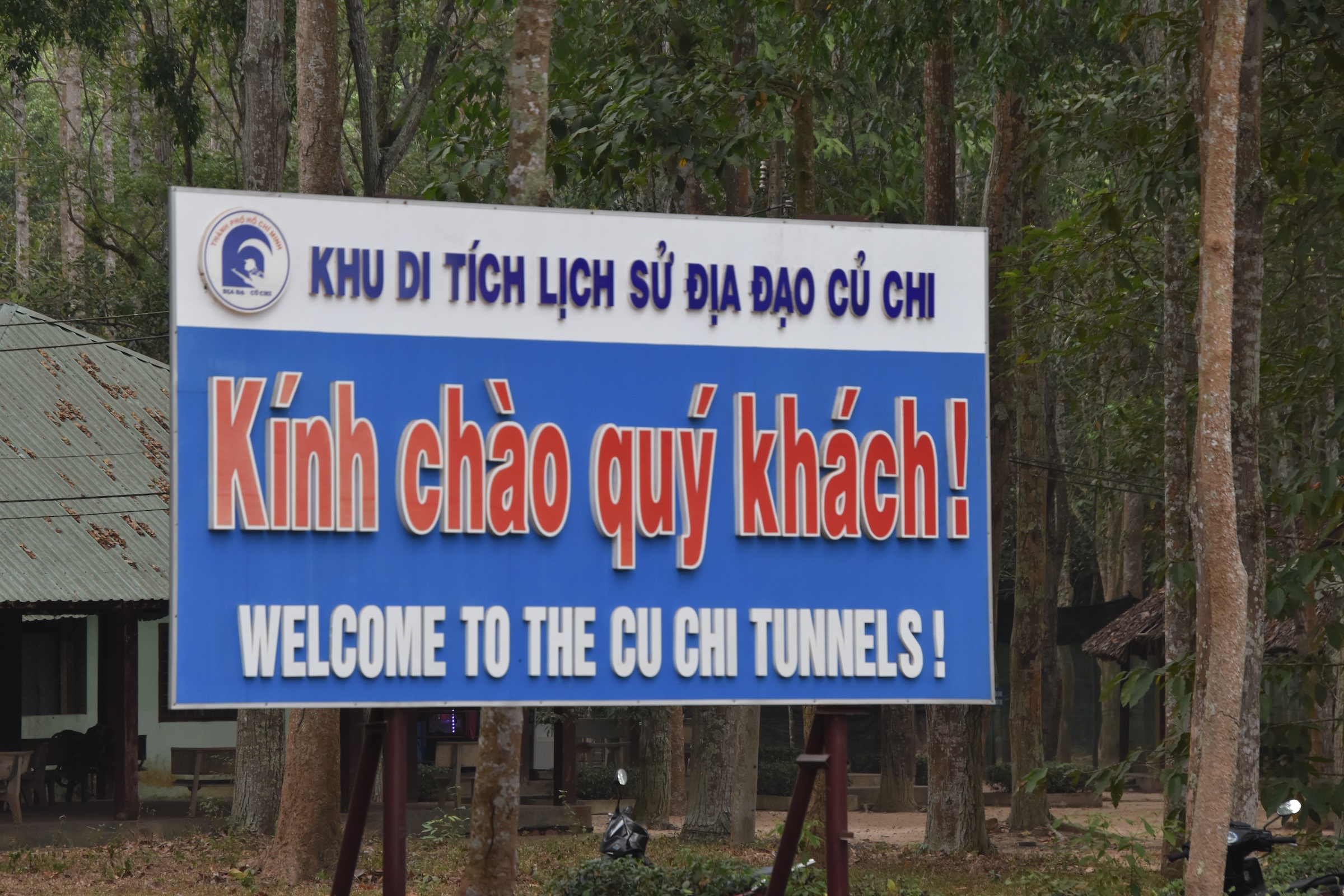
The visit starts with the obligatory destroyed American instruments of war.
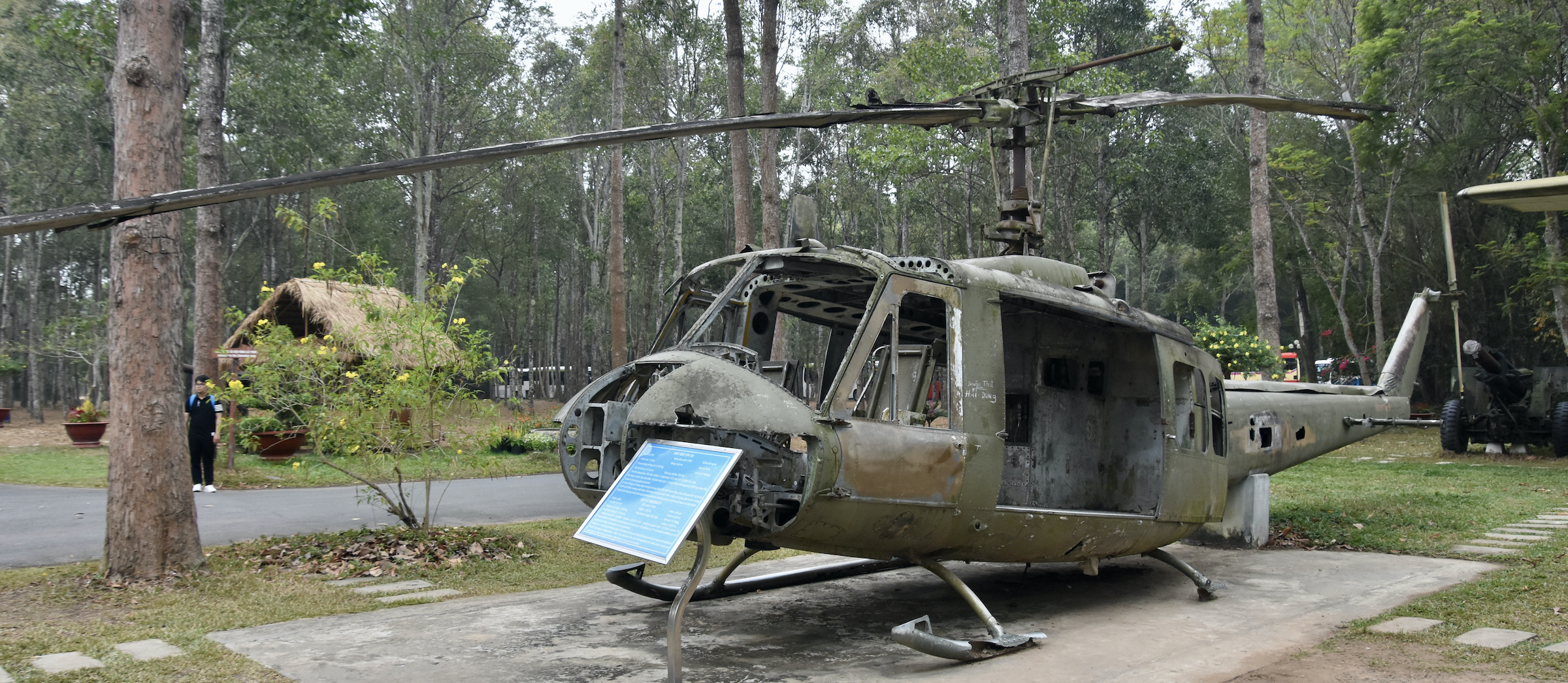
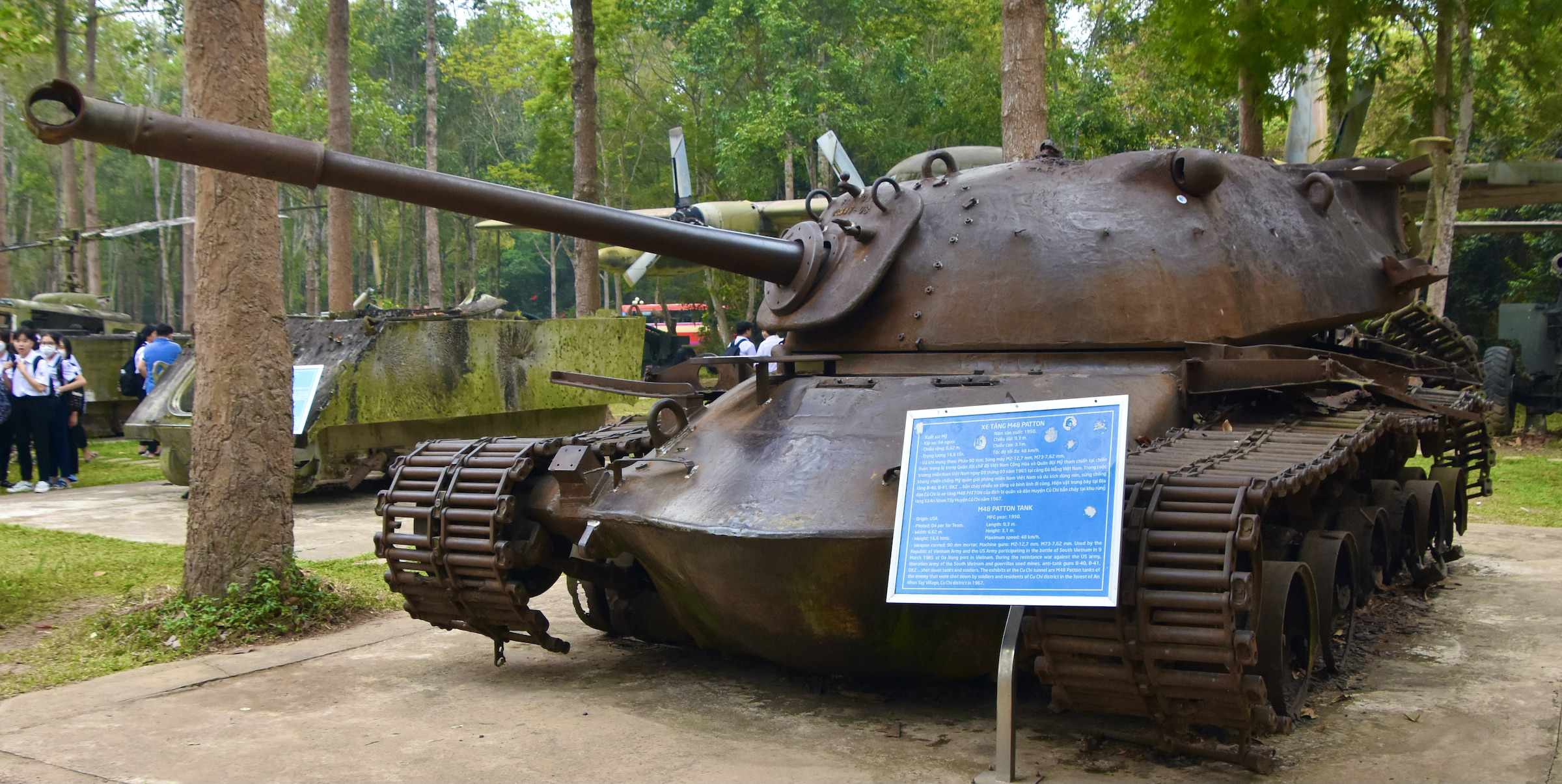
This is followed by a walk in the woods where nothing is as it seems – like this termite mound that is actually hiding a tunnel entrance.
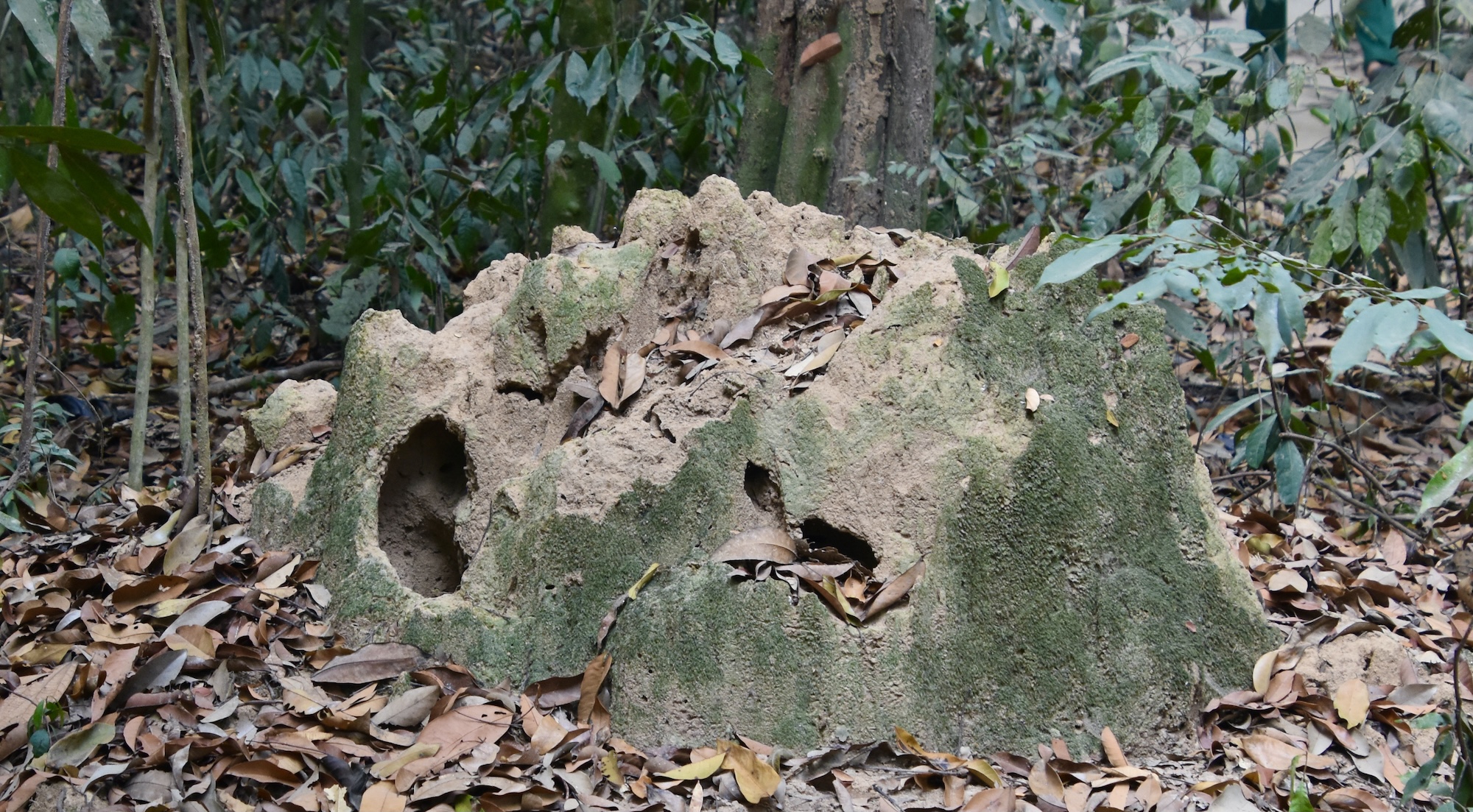
Or this perfectly ordinary looking bunch of leaf litter where our local guide, who can’t weigh more than 100 pounds, promptly disappears into.
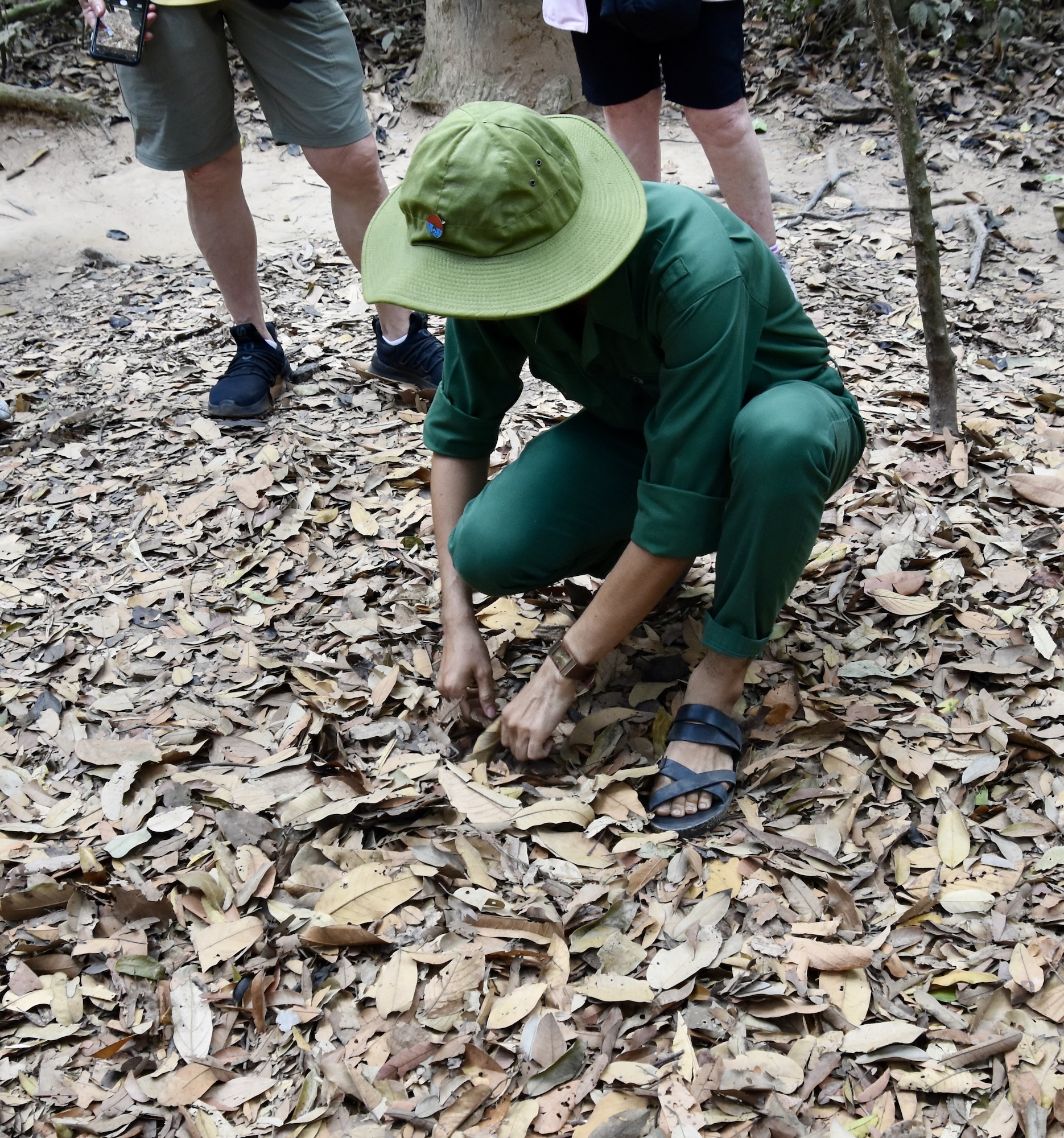
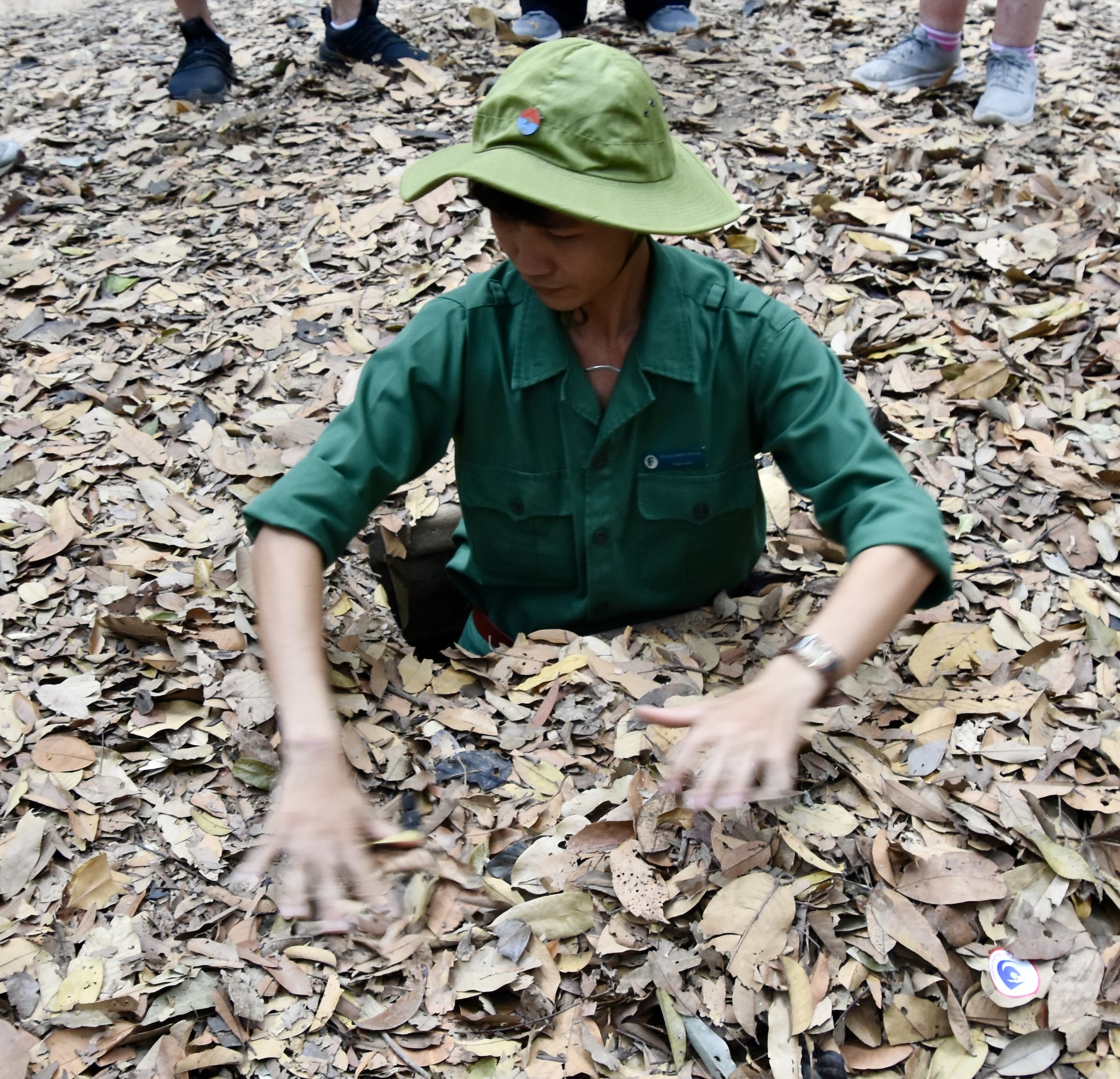
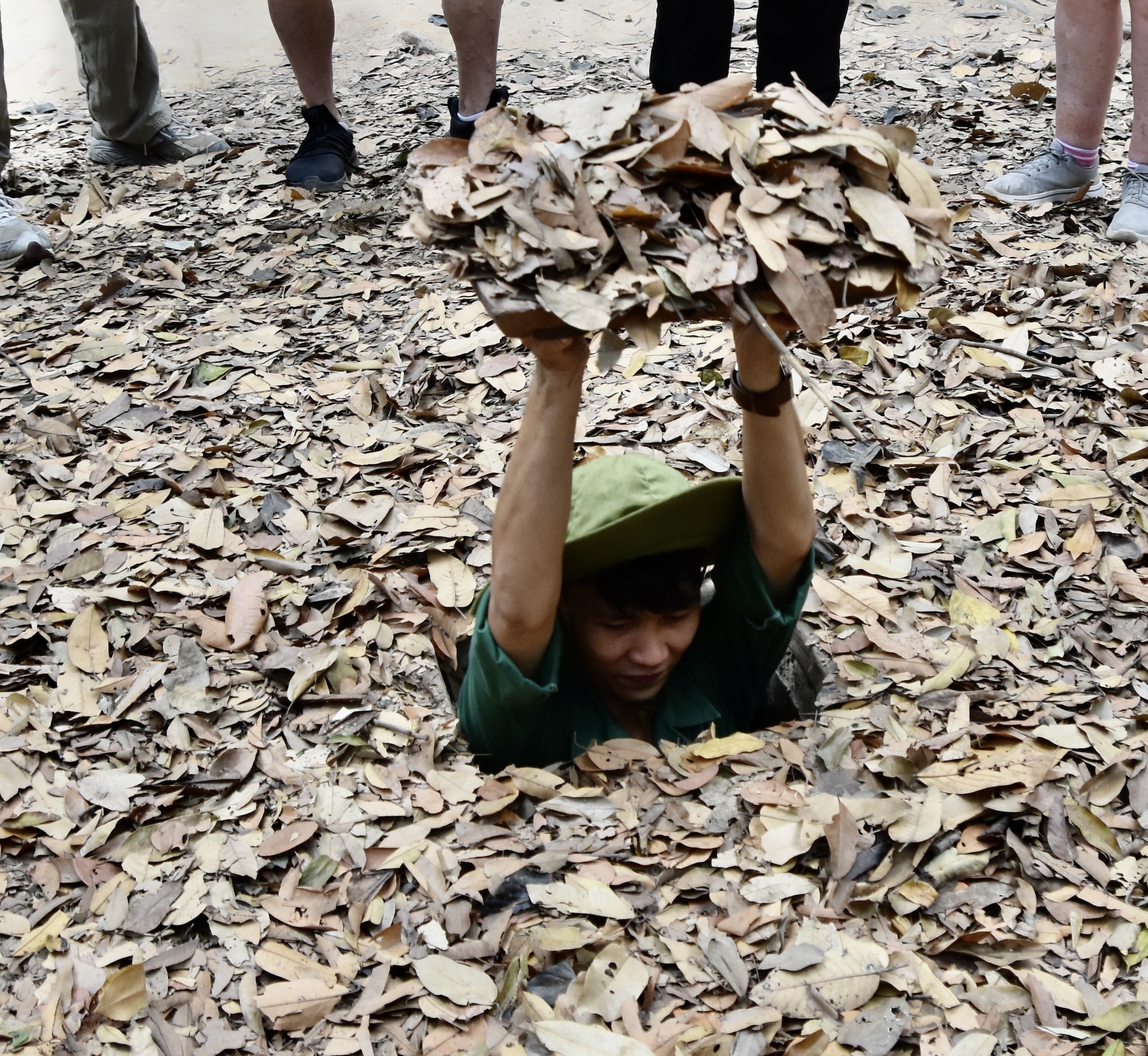
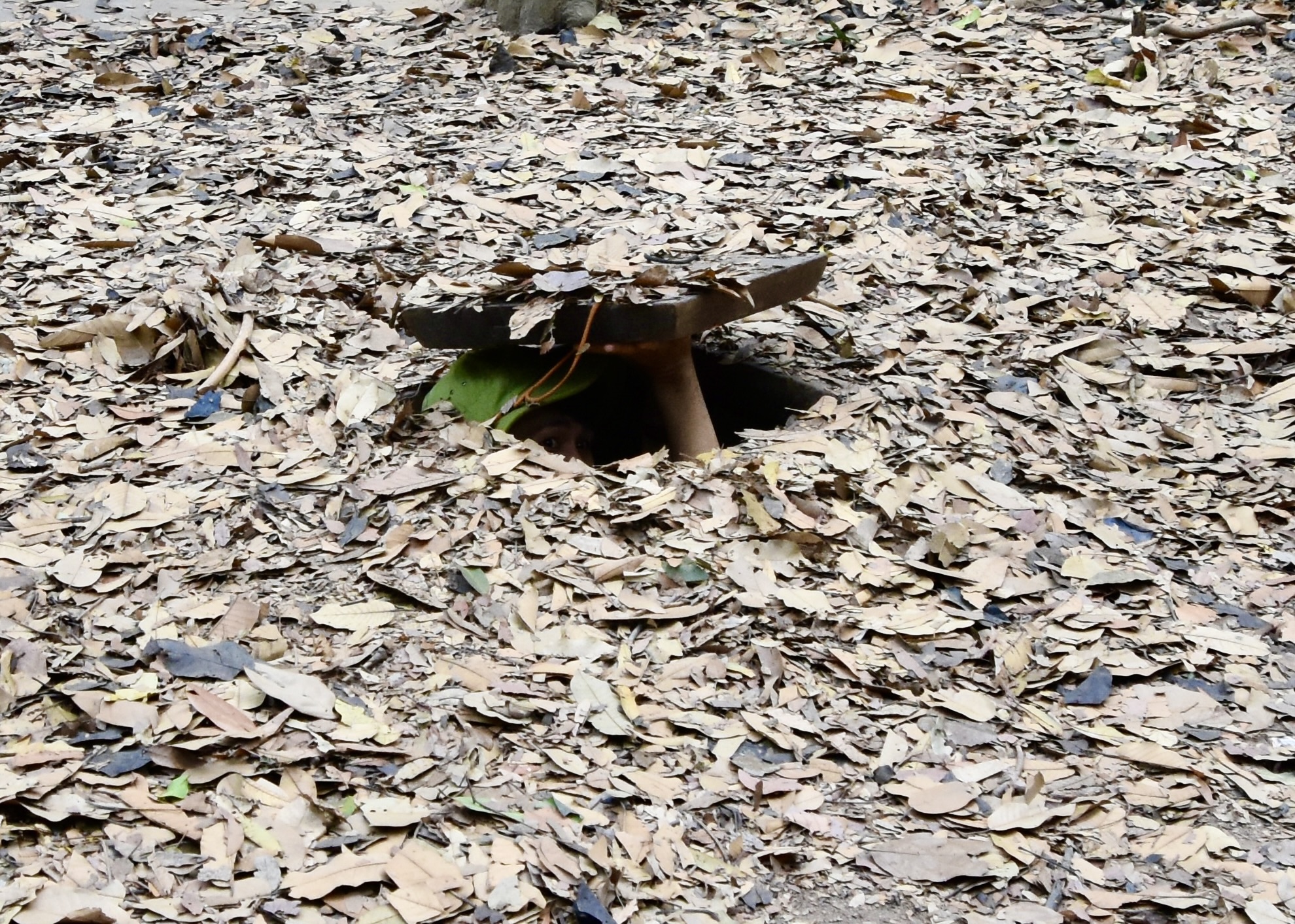
A few brave souls followed suit, but unless you were as skinny as a rake, there was no way to fit in. Can you imagine an 18 year old American kid being asked to go blindly into one of these tunnels to hunt for Viet Cong? I can’t believe that any of them did it, but they did and not surprisingly, the death rate was inordinately high.
We all had a chance to go into a more conventional tunnel.
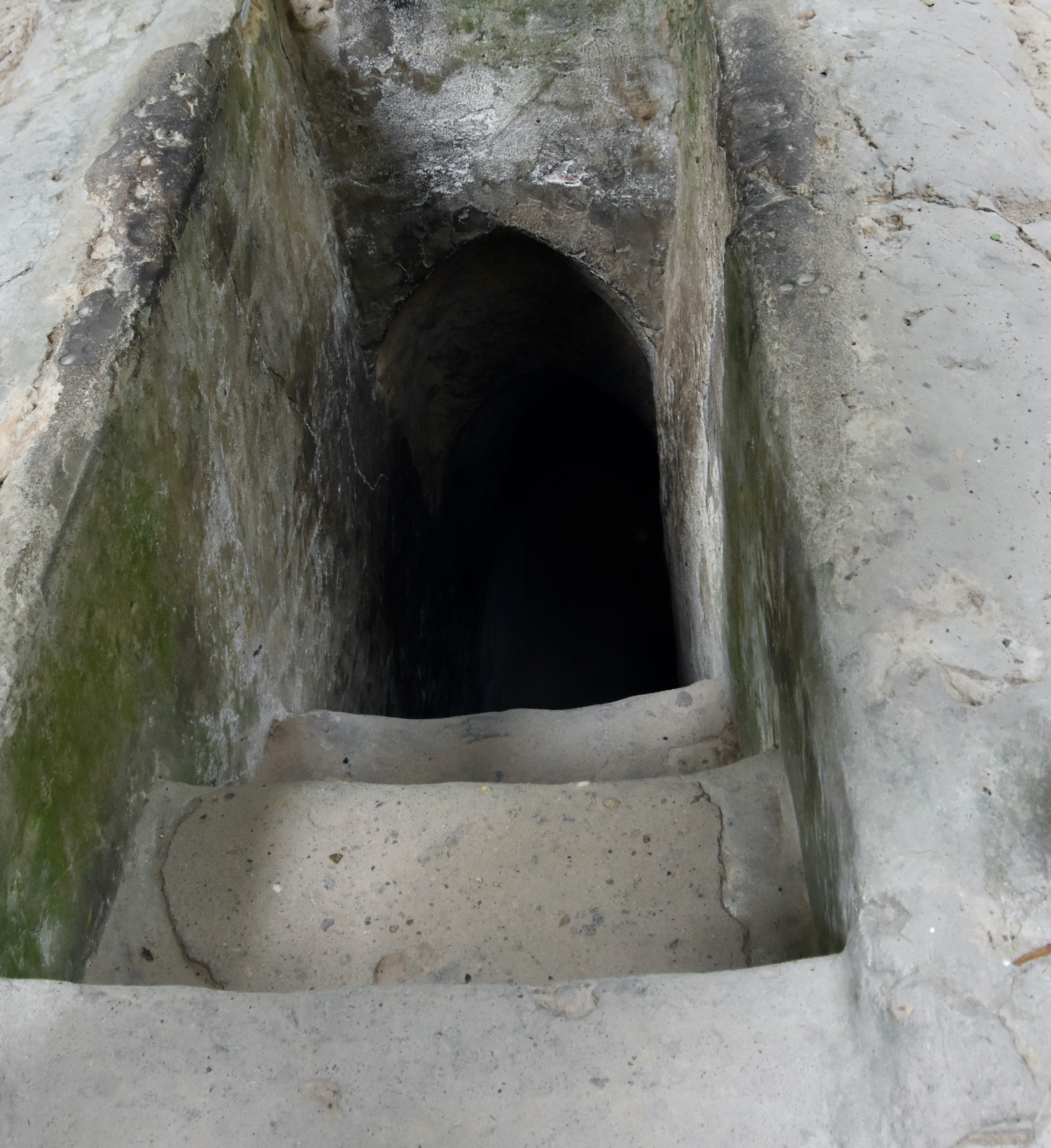
But it still wasn’t exactly roomy.
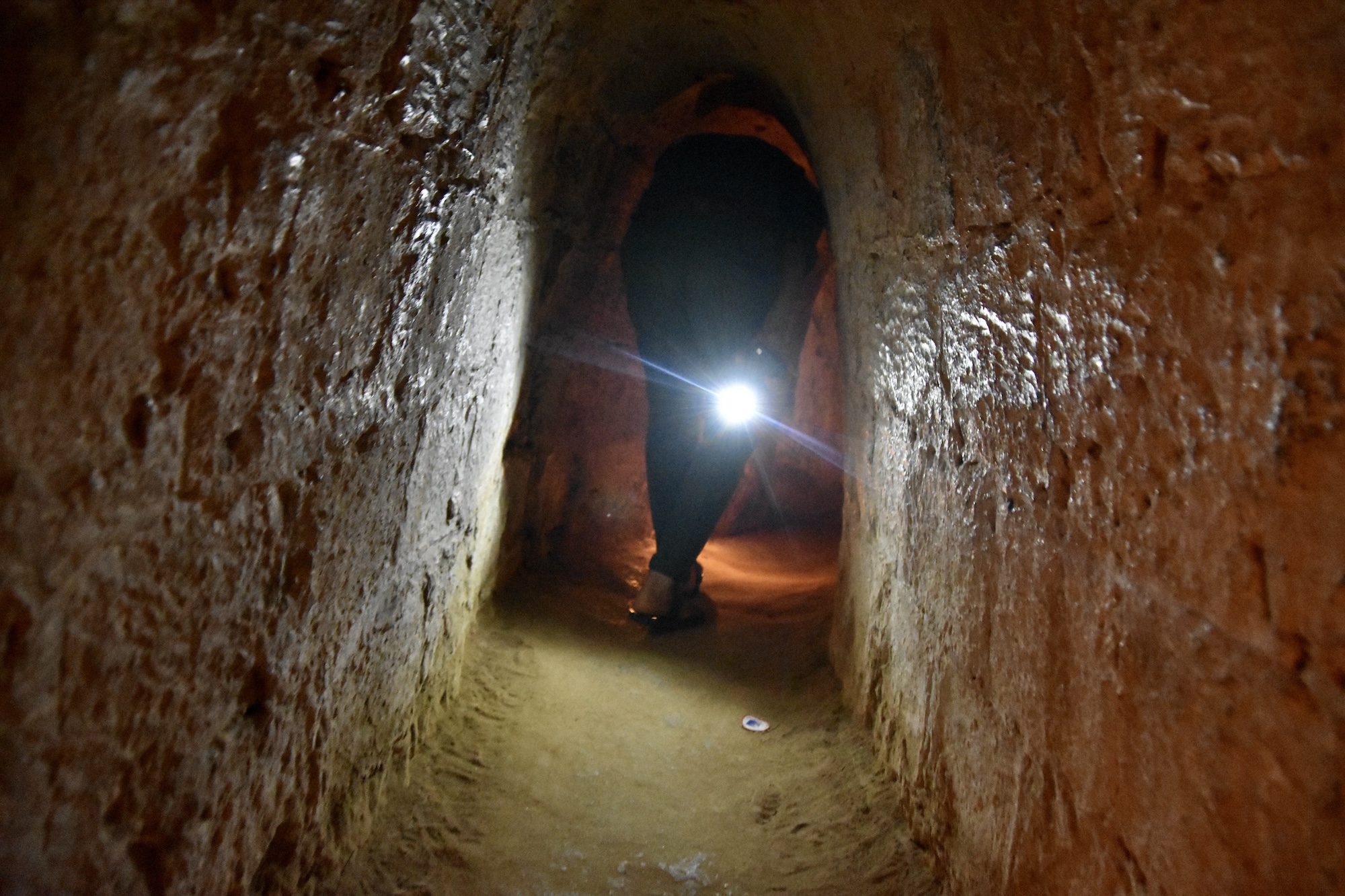
While I had not heard of the Cu Chin tunnels during the course of the Vietnam War, I certainly had heard about the horrors of the punji stick booby traps. These were made of sharpened bamboo shoots that were hidden beneath trap doors placed on patrol routes and often poisoned with feces or other disgusting things that would cause grievous infections. Even more terrifying to American troops than going into the tunnels was falling onto a punji stick. The Cu Chin tunnel exhibit had a gruesome number and variety of these traps on display. This is about the most harmless looking one.
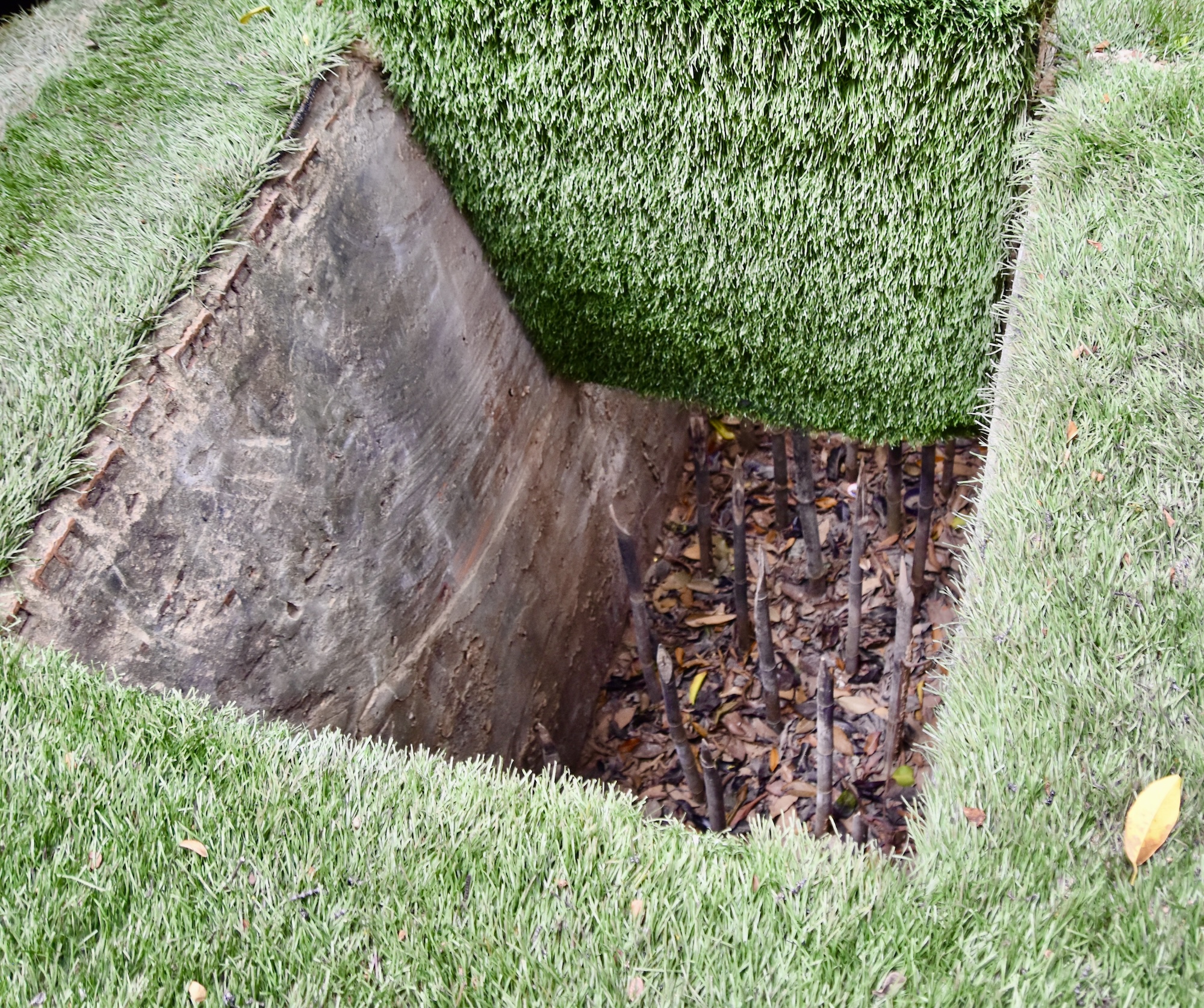
This rolling trap that would pin anyone down who stepped on it is surely the thing of nightmares.
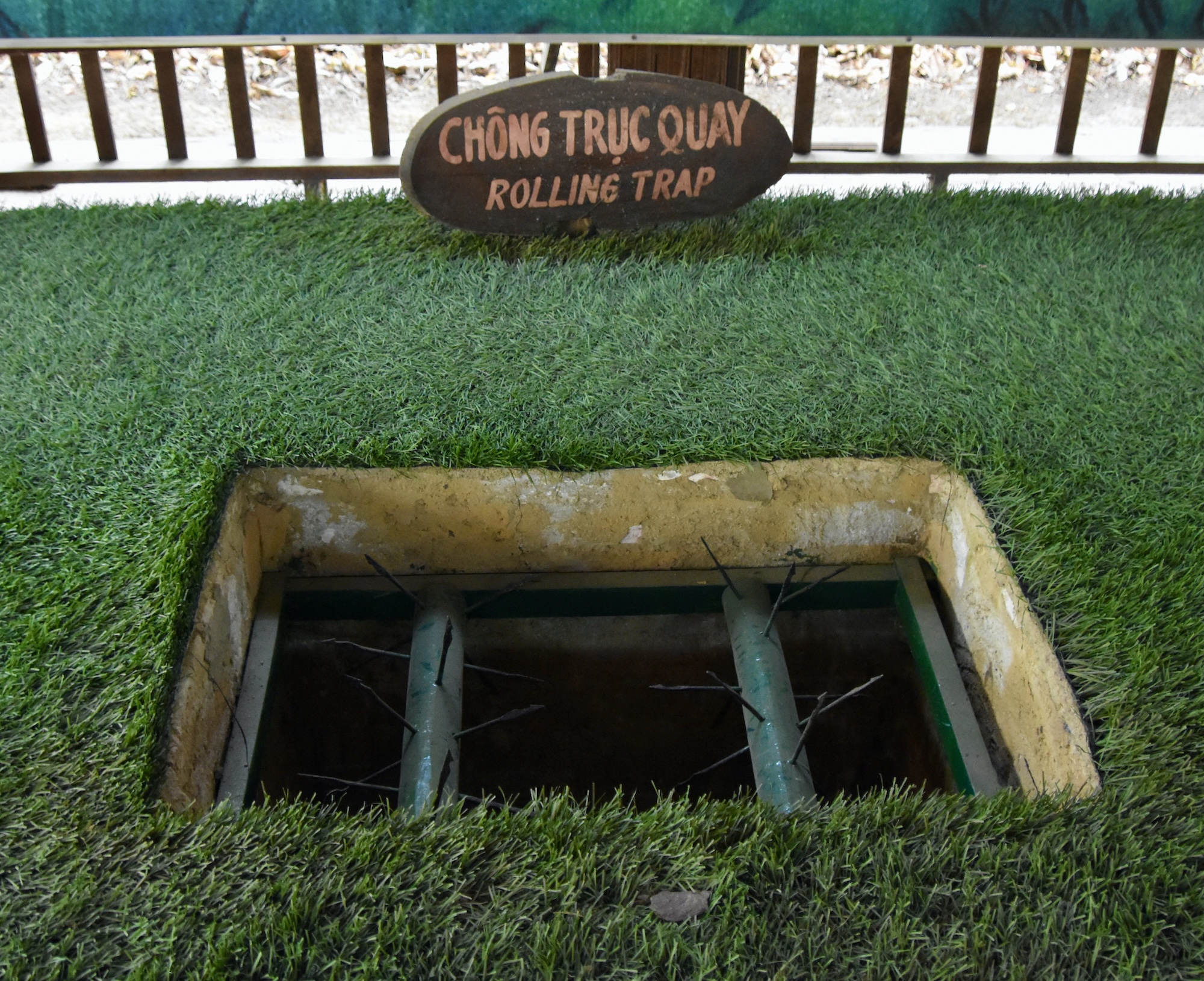
There were ones even worse than this, but I’m not going to subject my readers to them. Seeing them still bothers me almost a year later.
Well, on that cheery note we’ll end our visit to Saigon, but not before having a last cocktail to wash away the thoughts of those kids in those tunnels. This is the first grasshopper I’ve had in at least twenty years
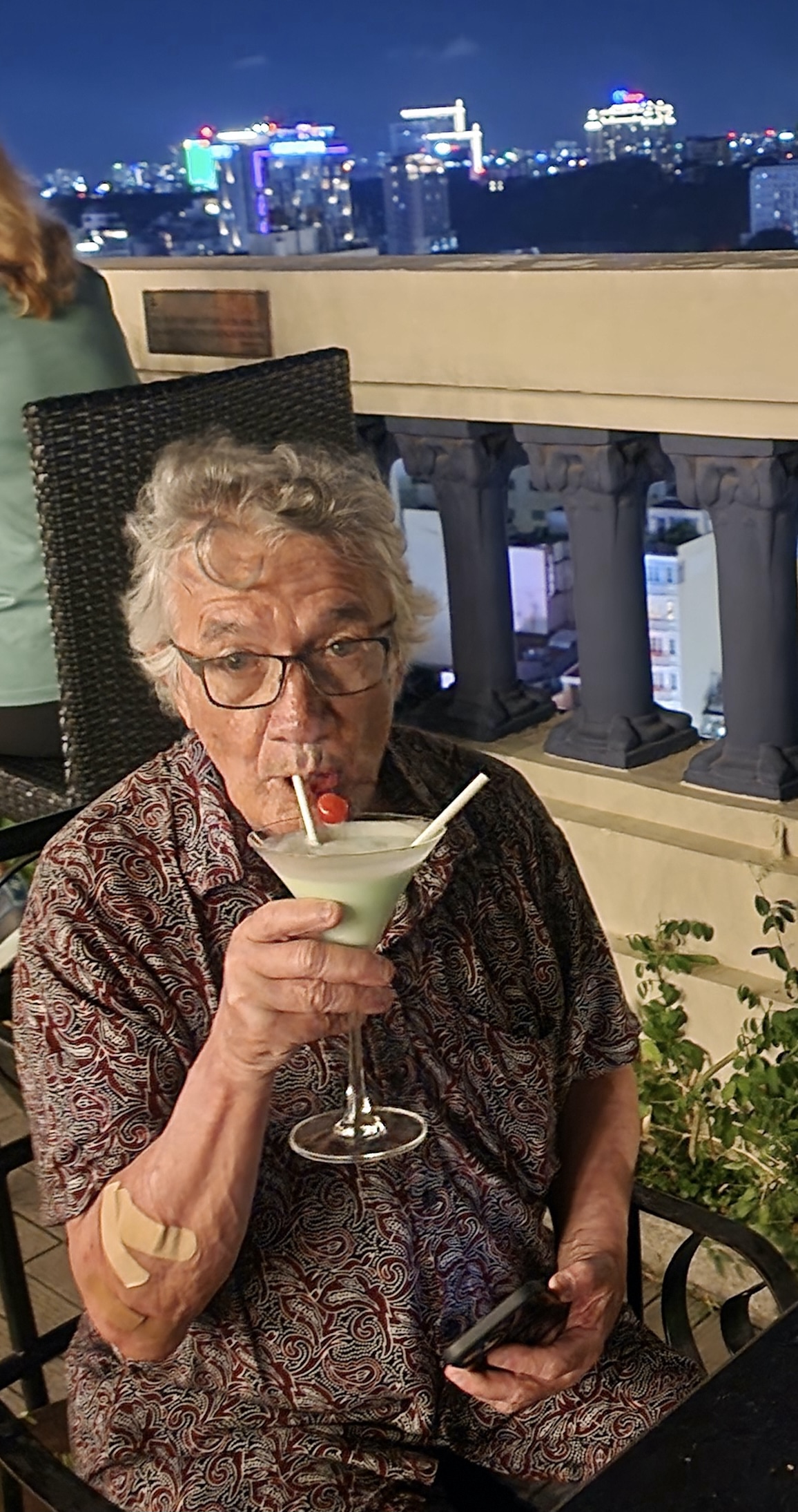
In the final post from Vietnam we’ll visit the Mekong Delta which you won’t want to miss. See you on board.


